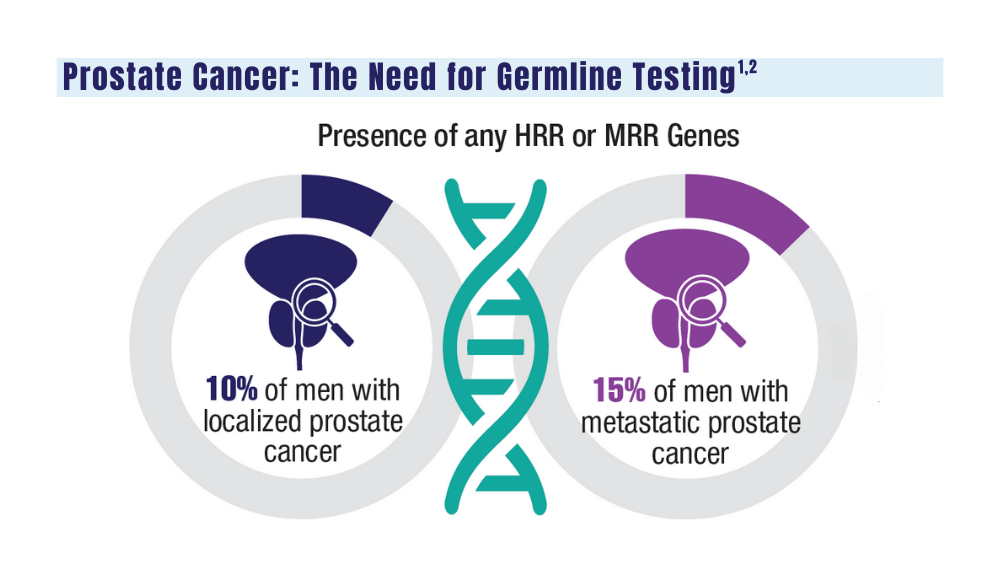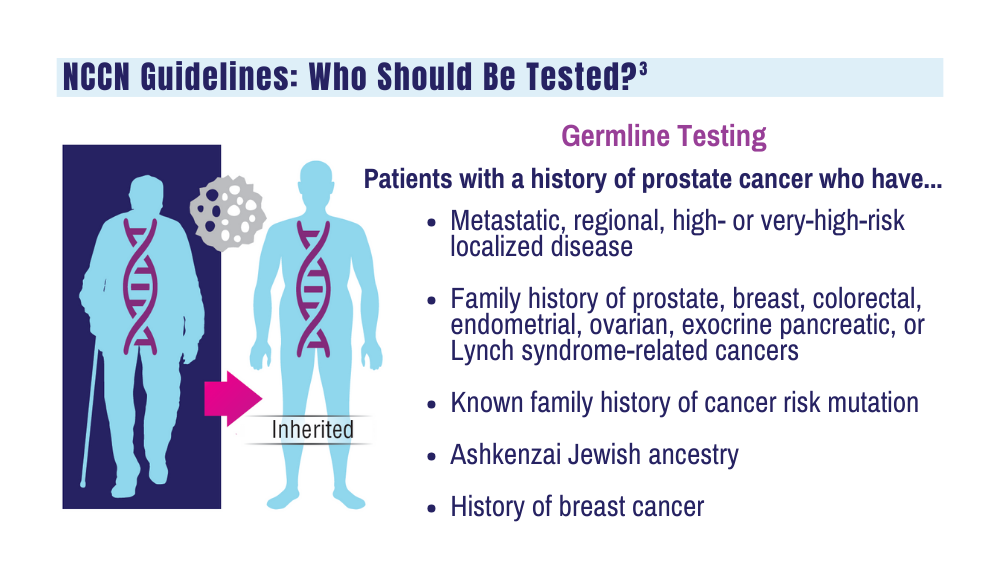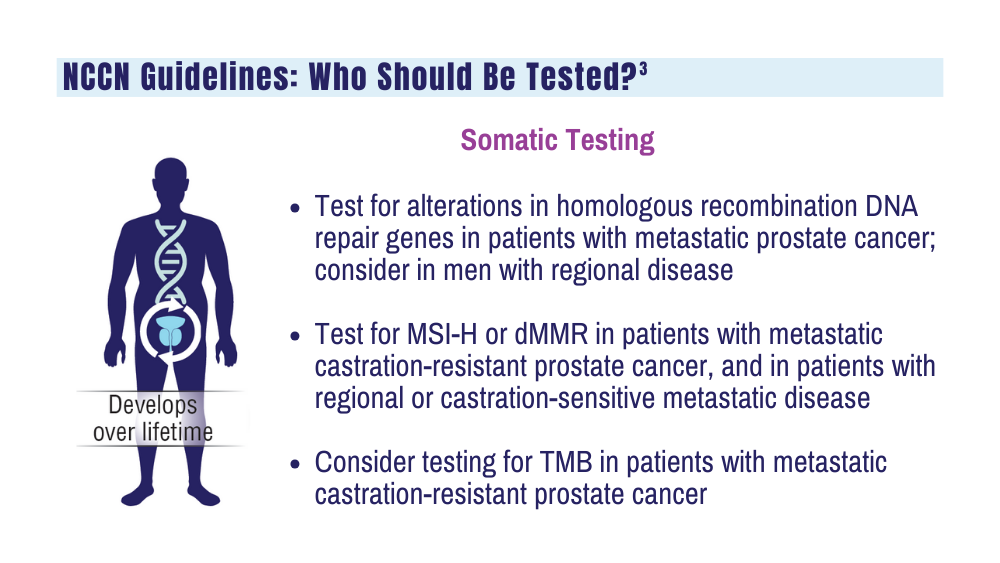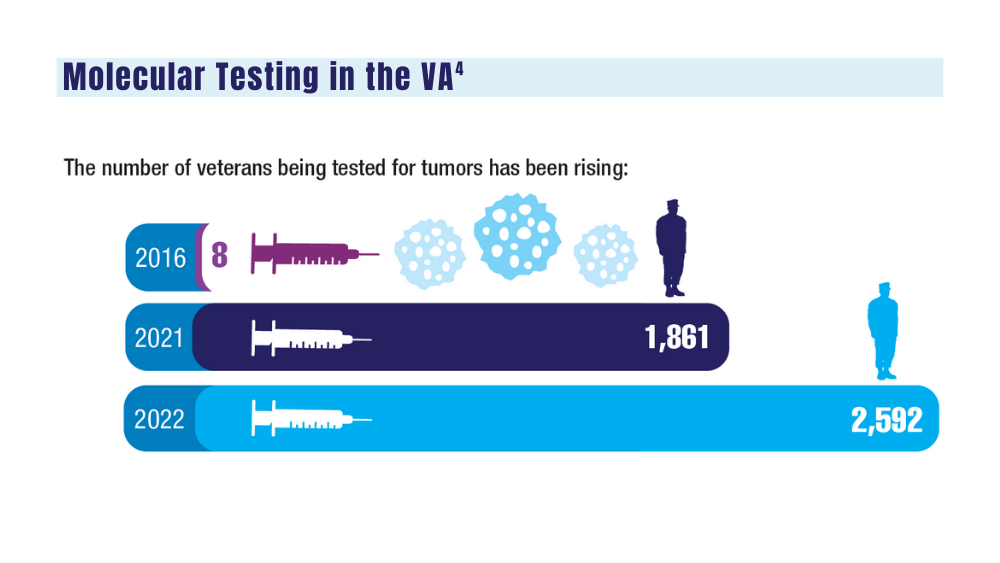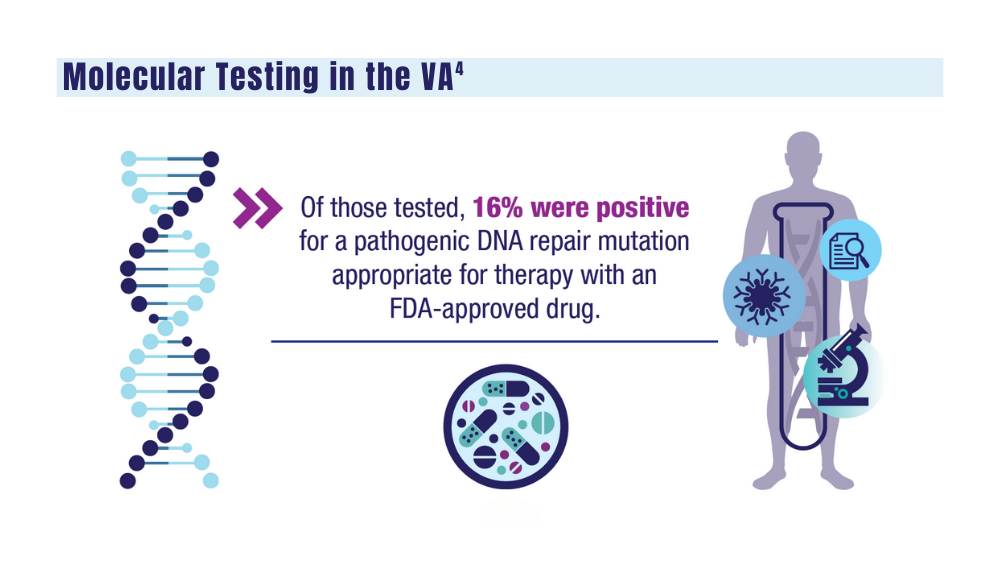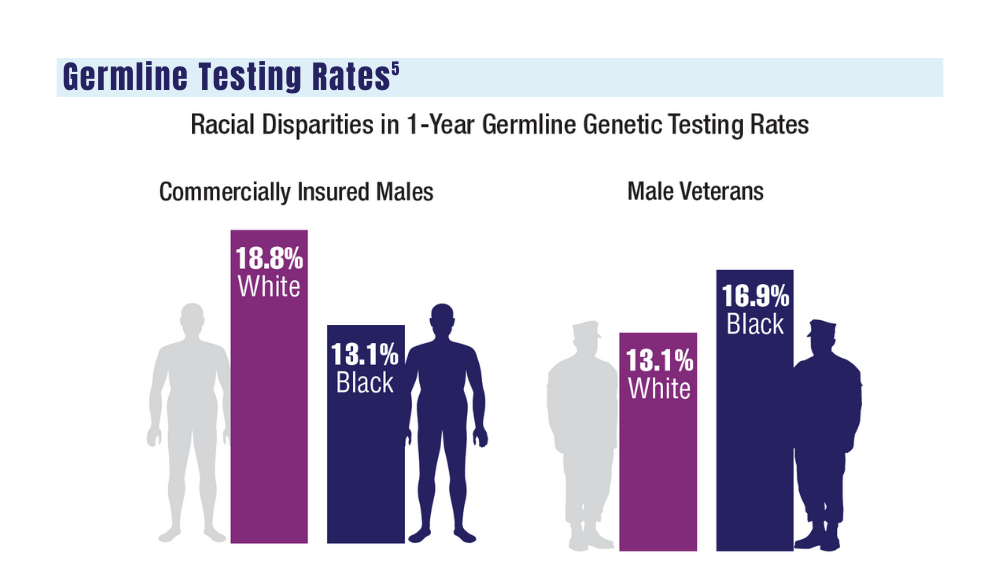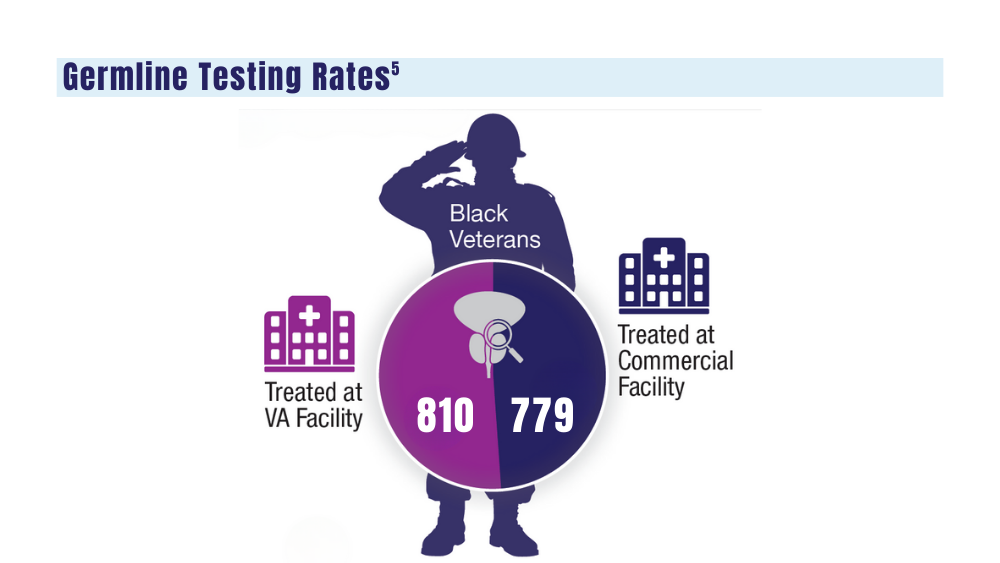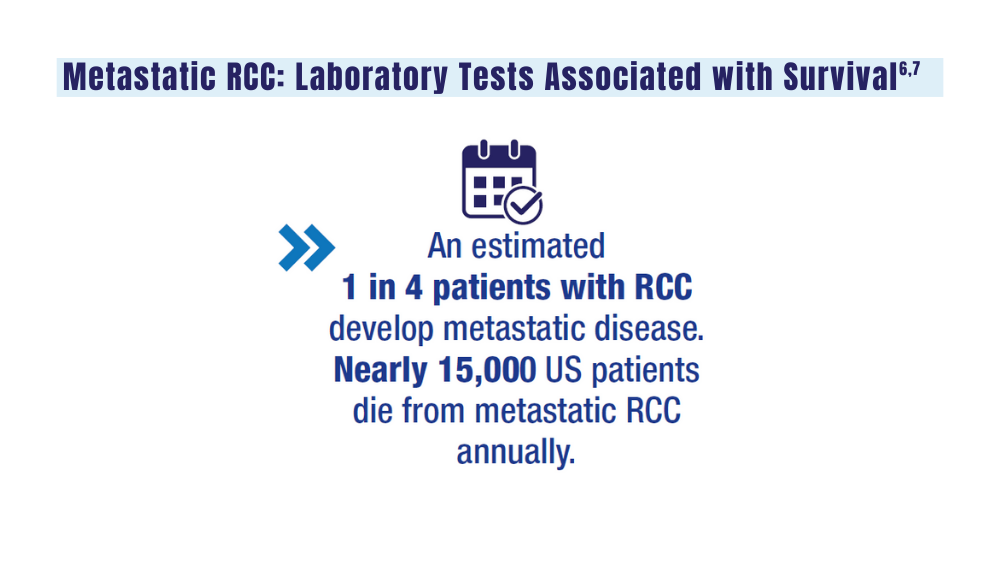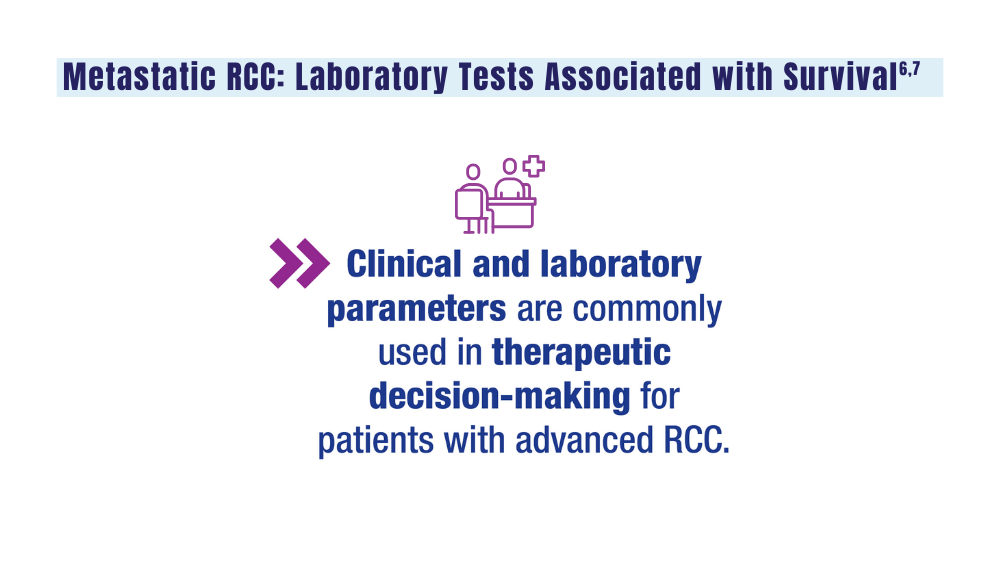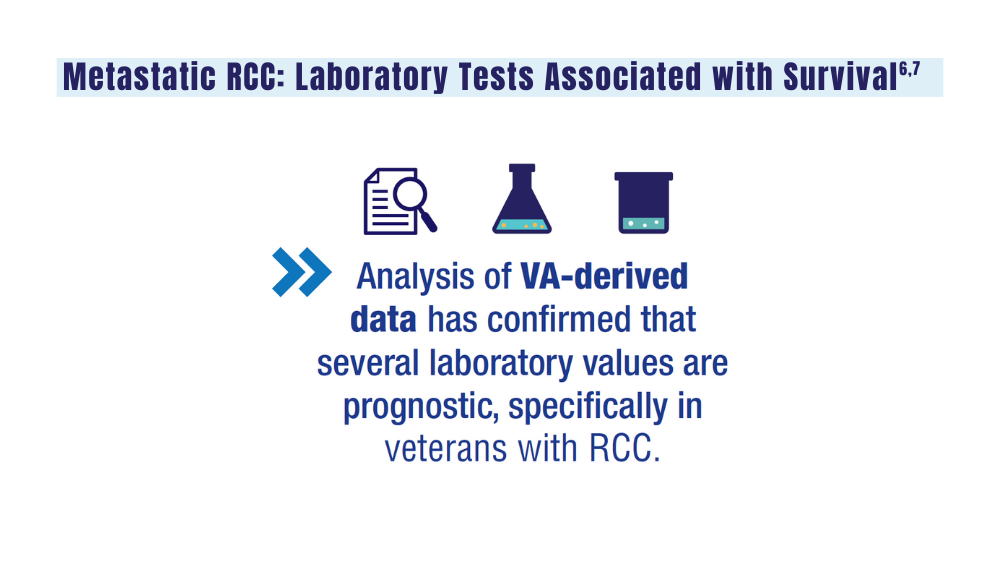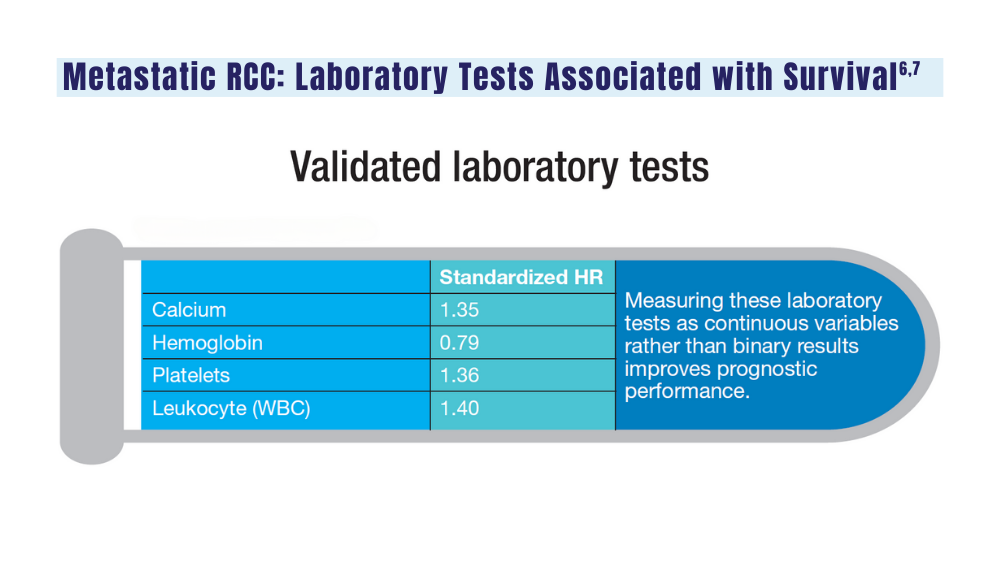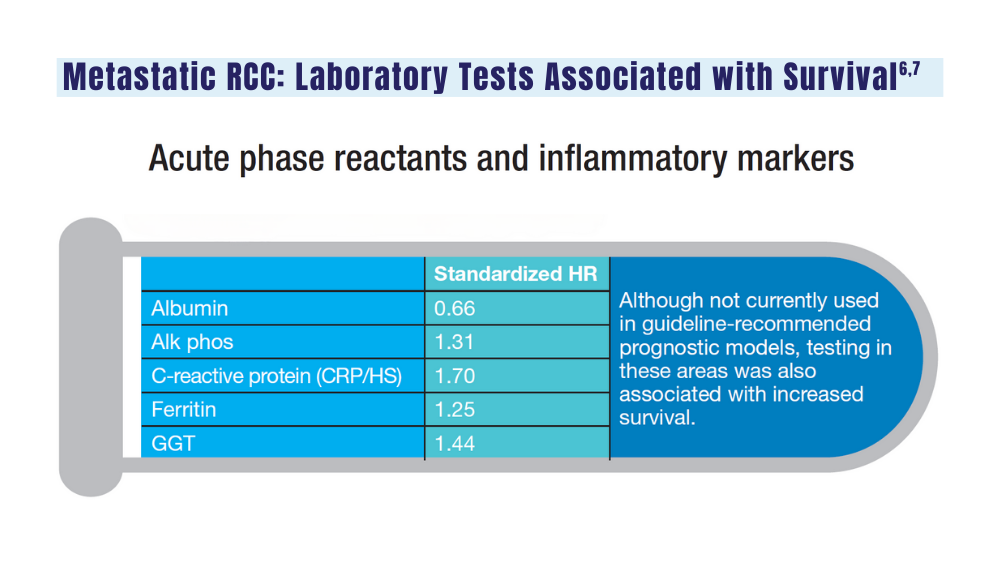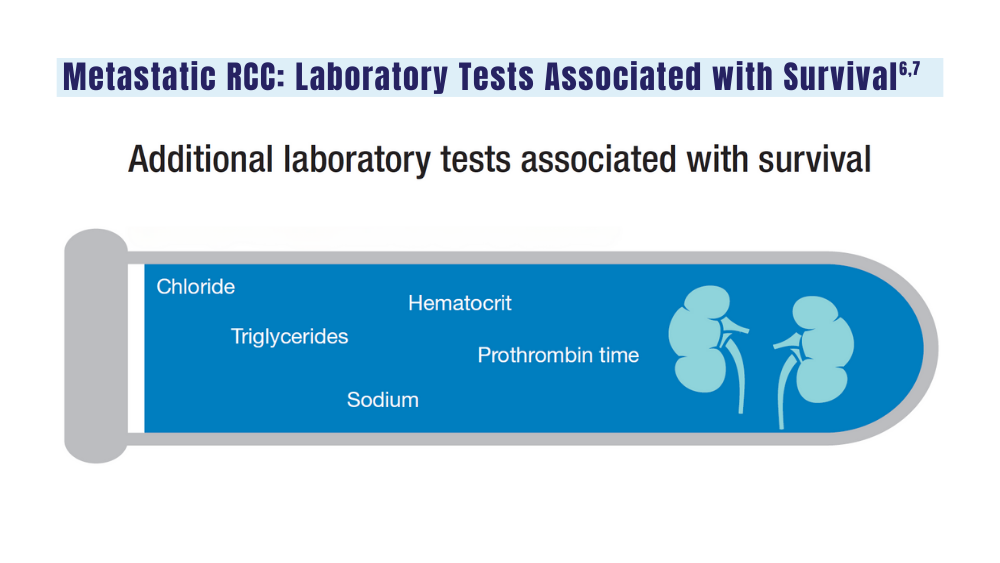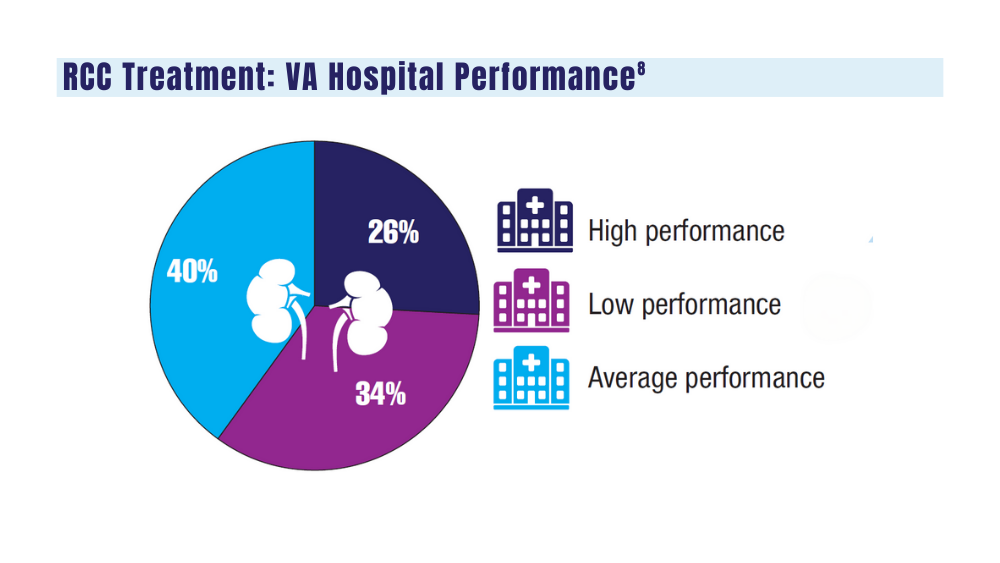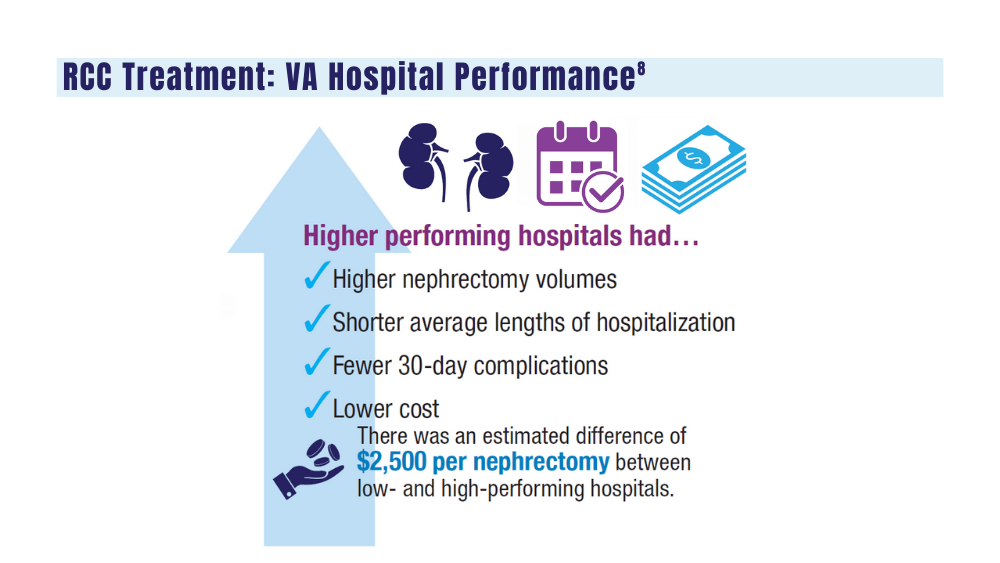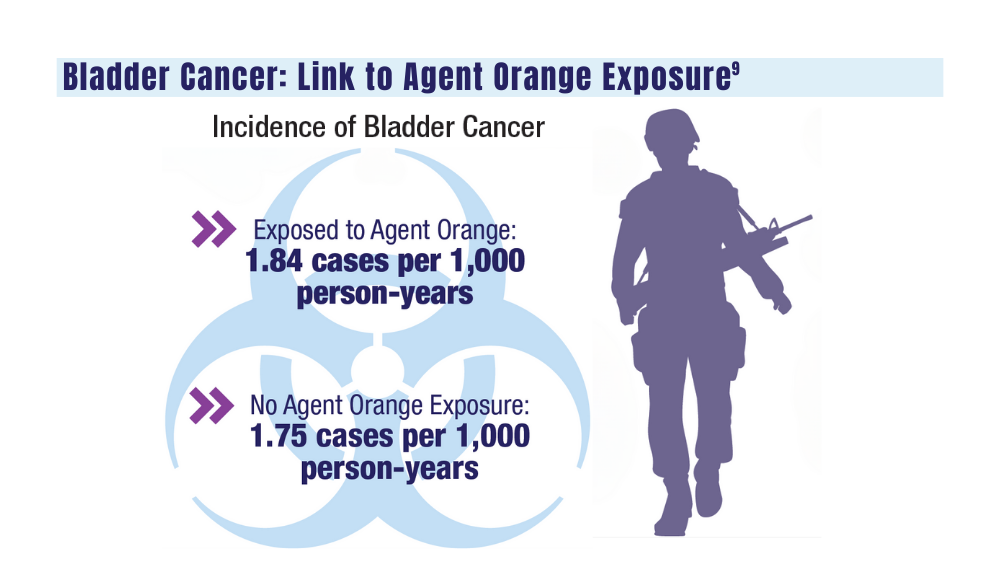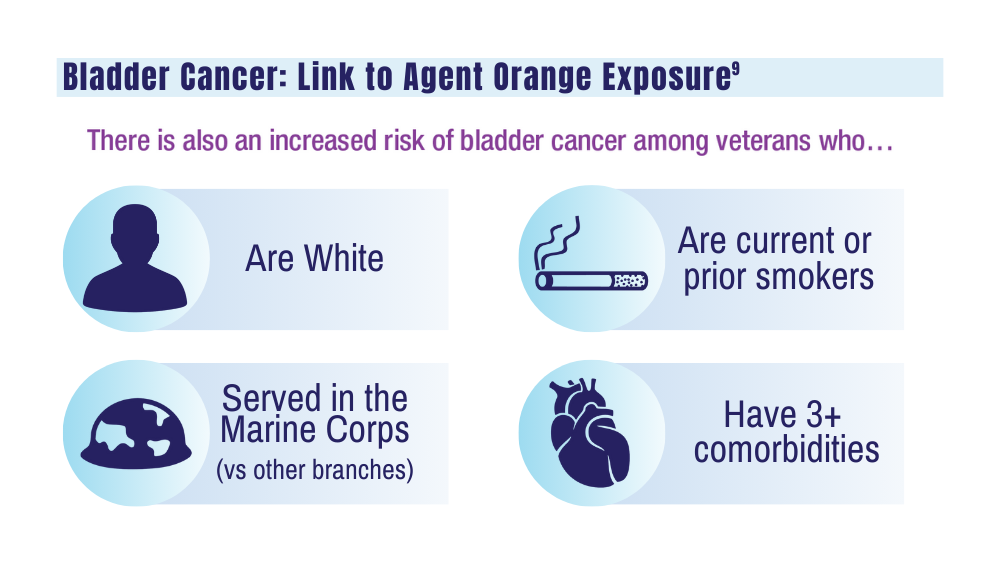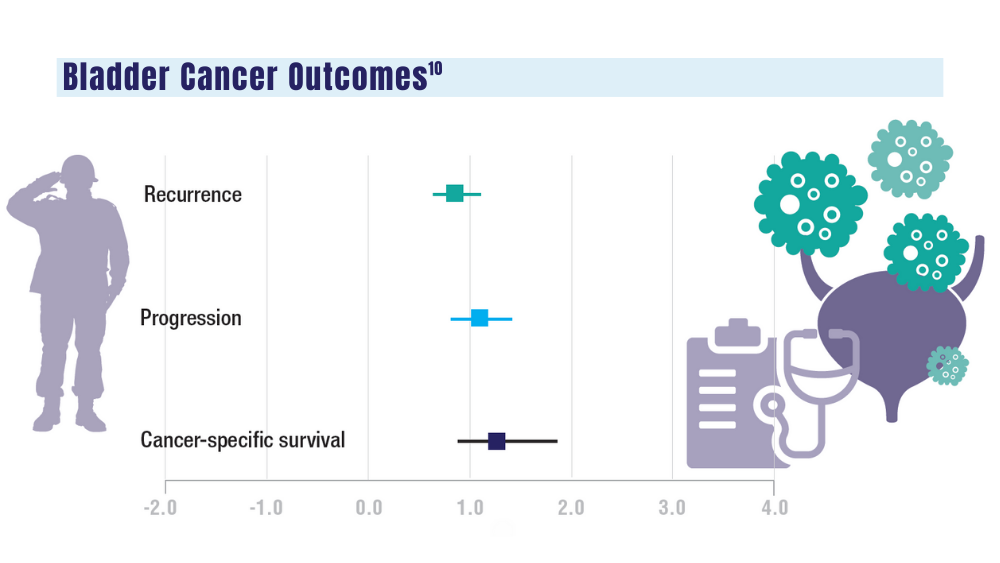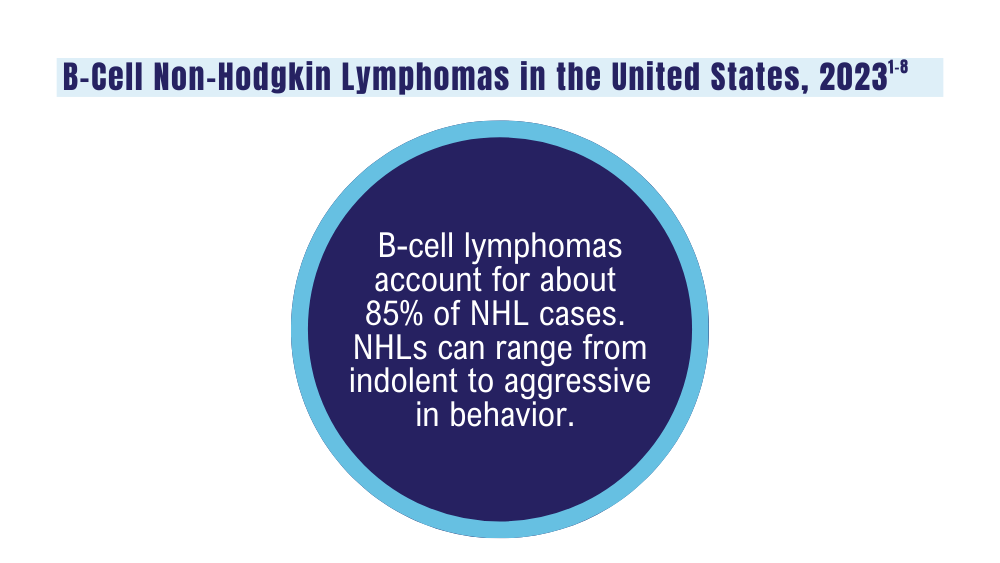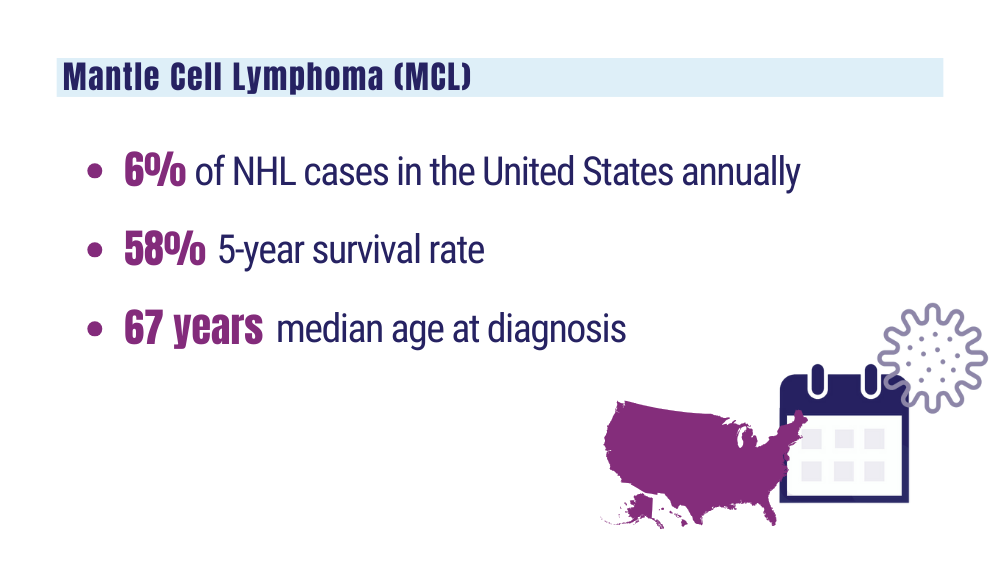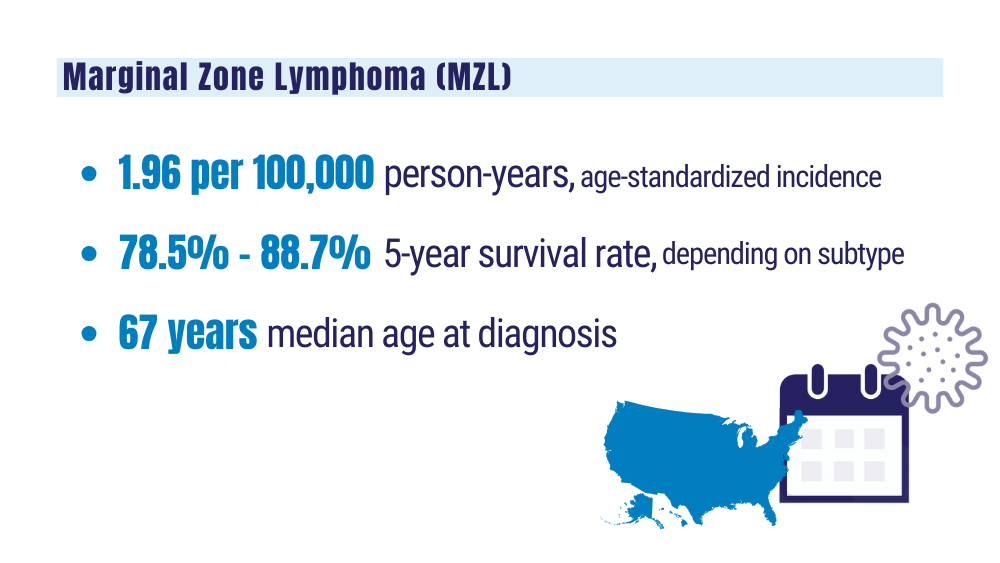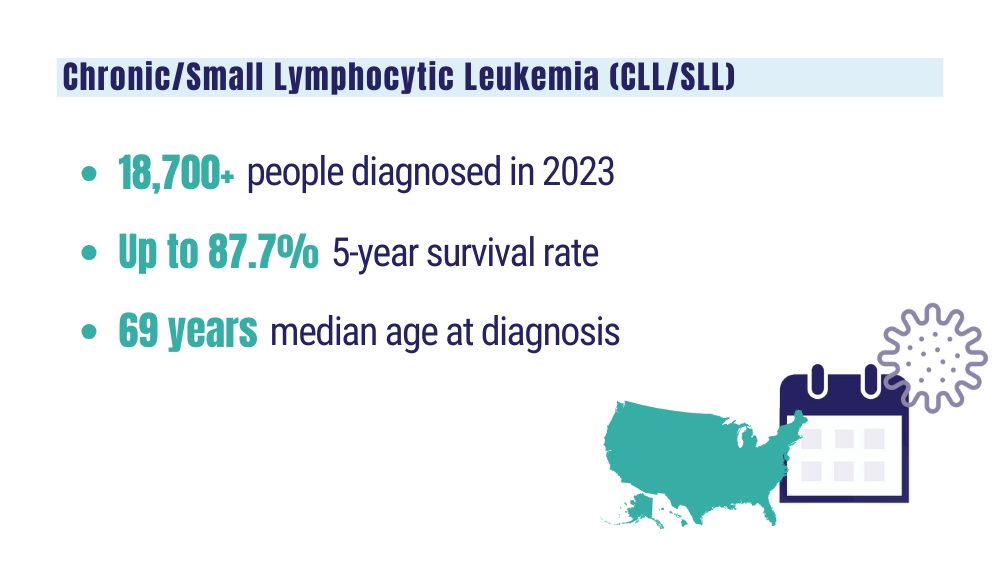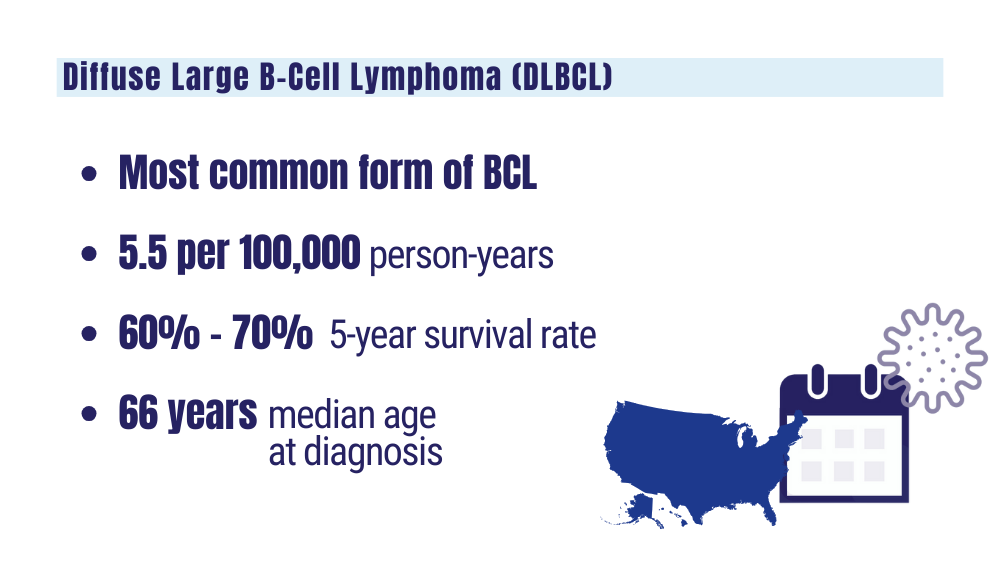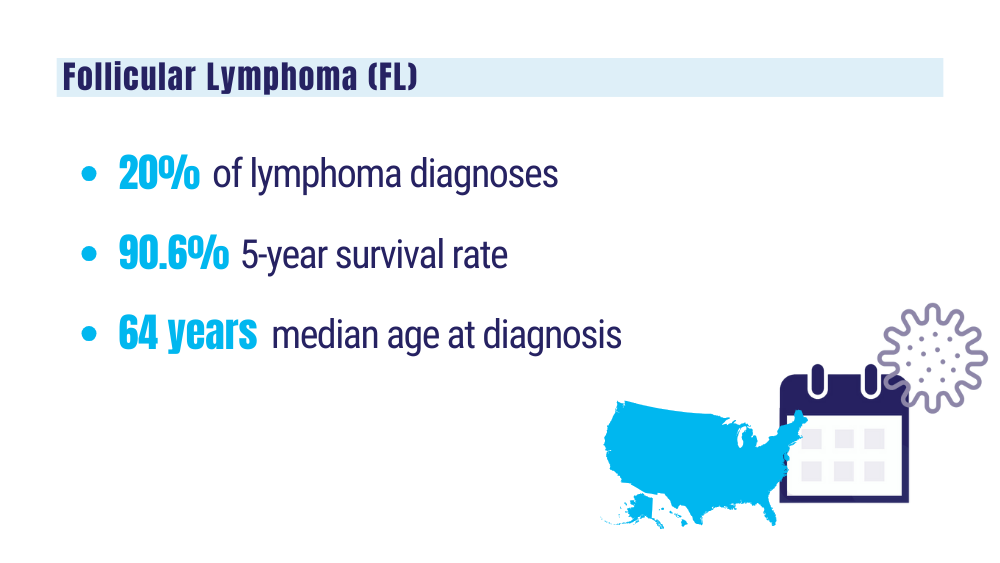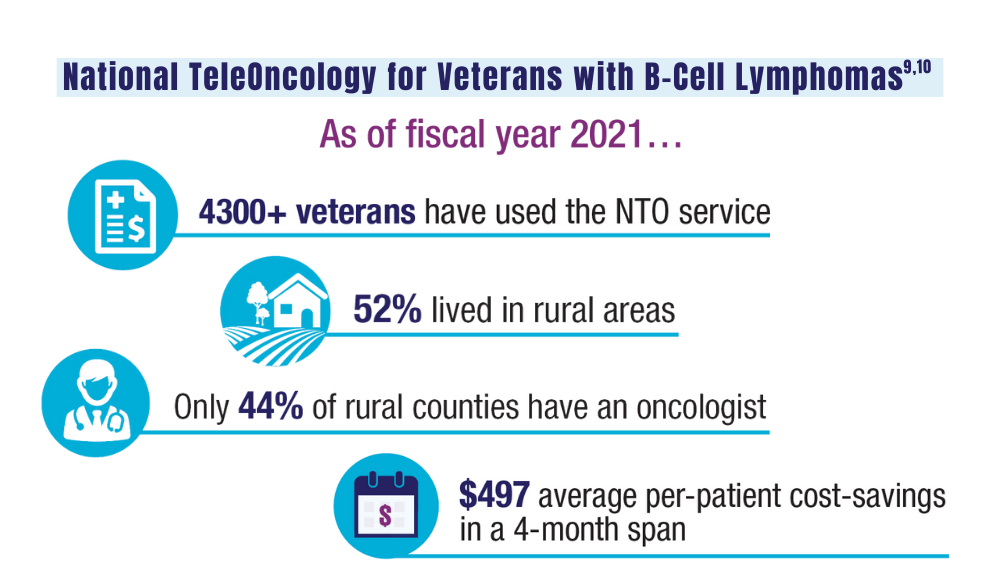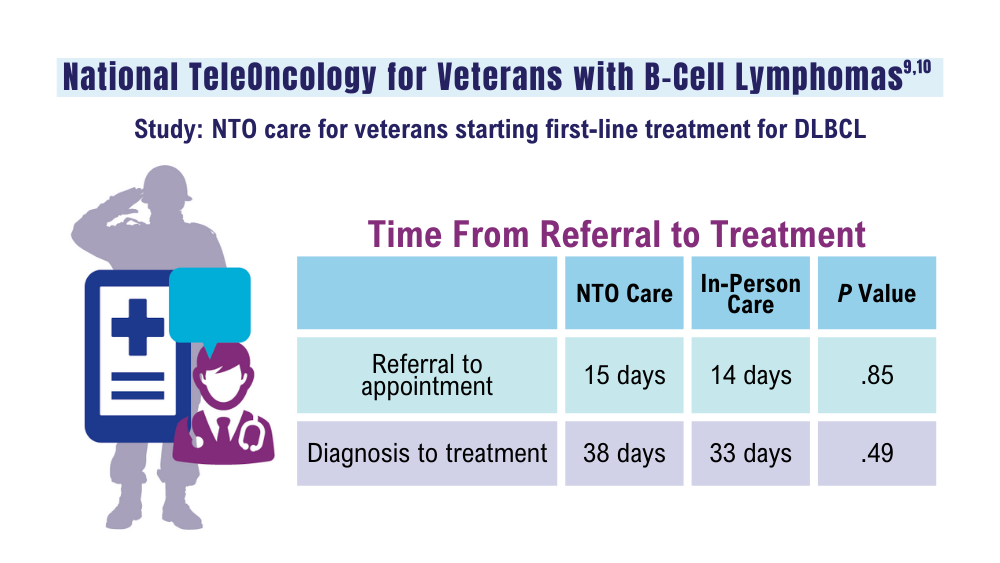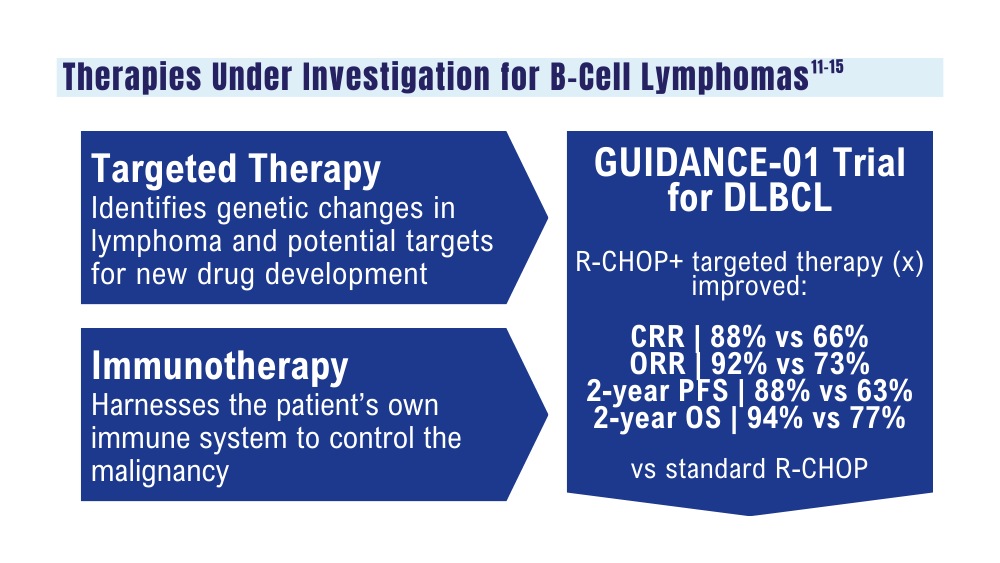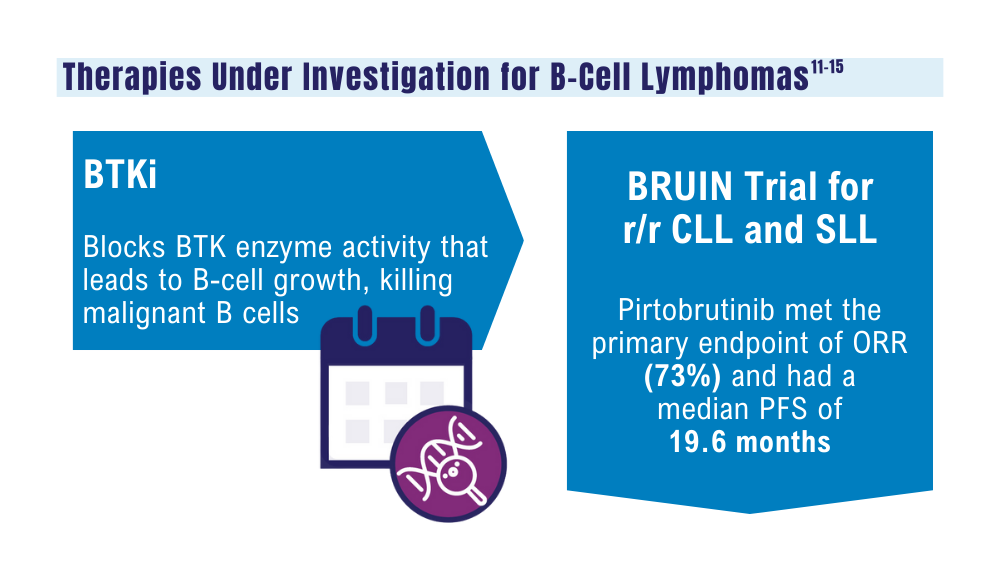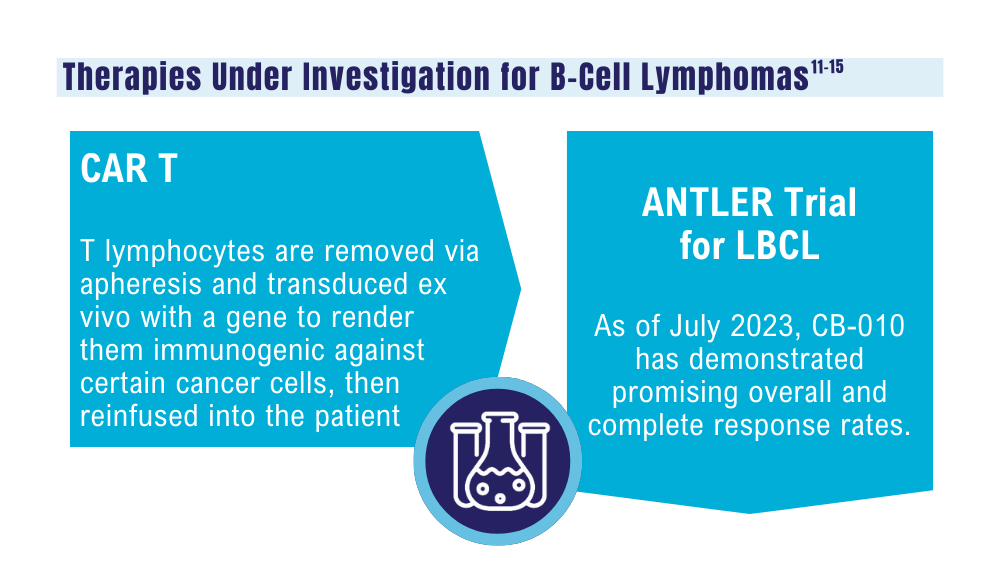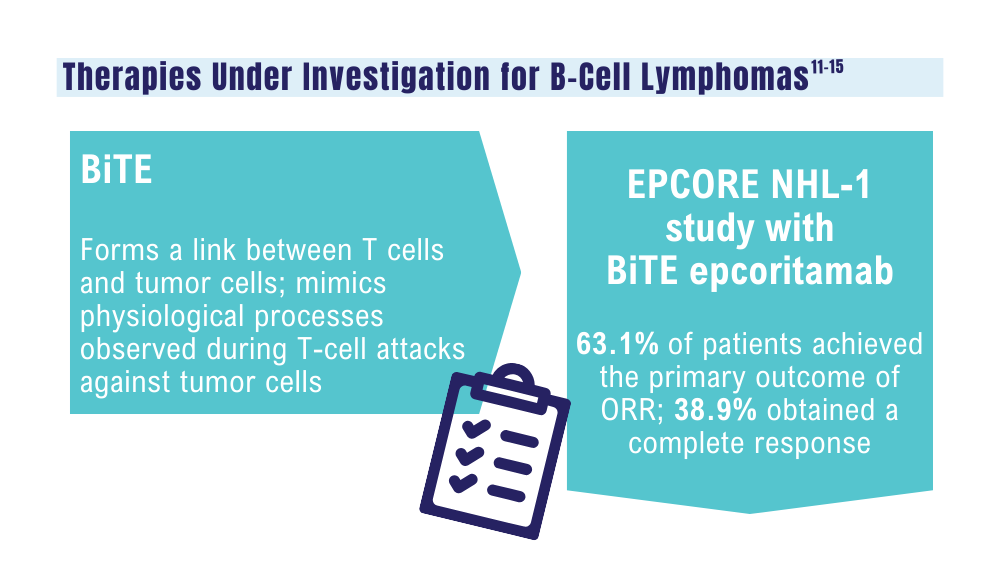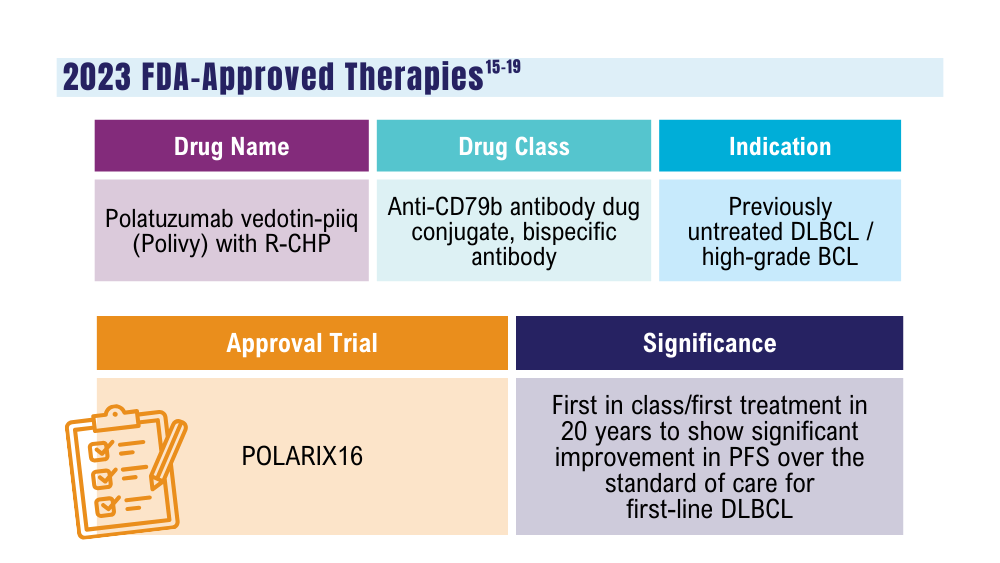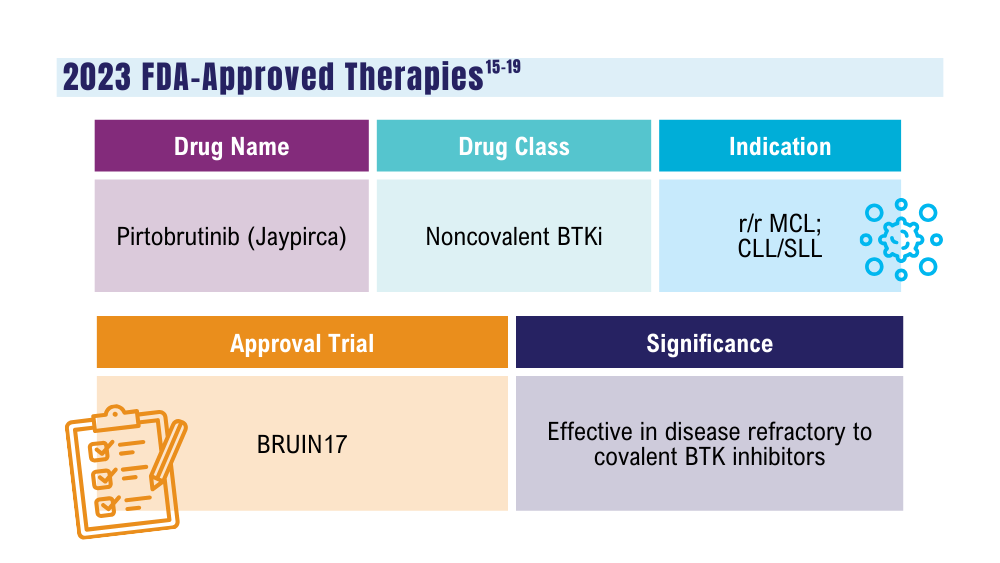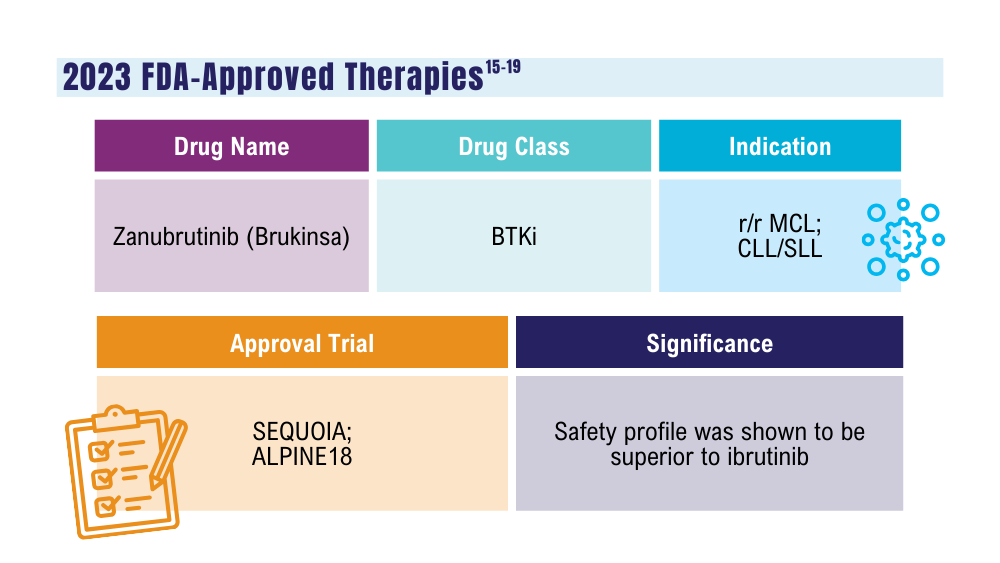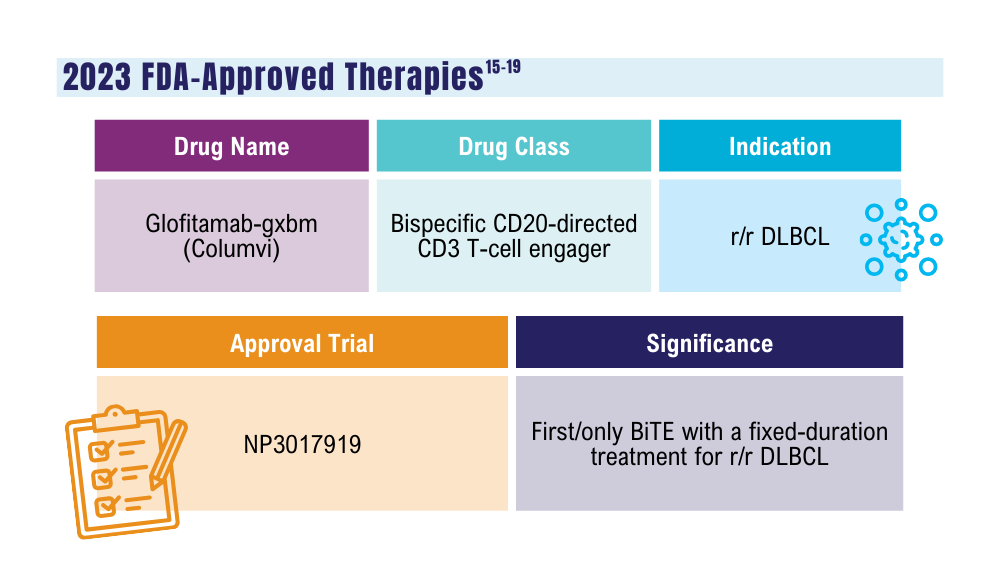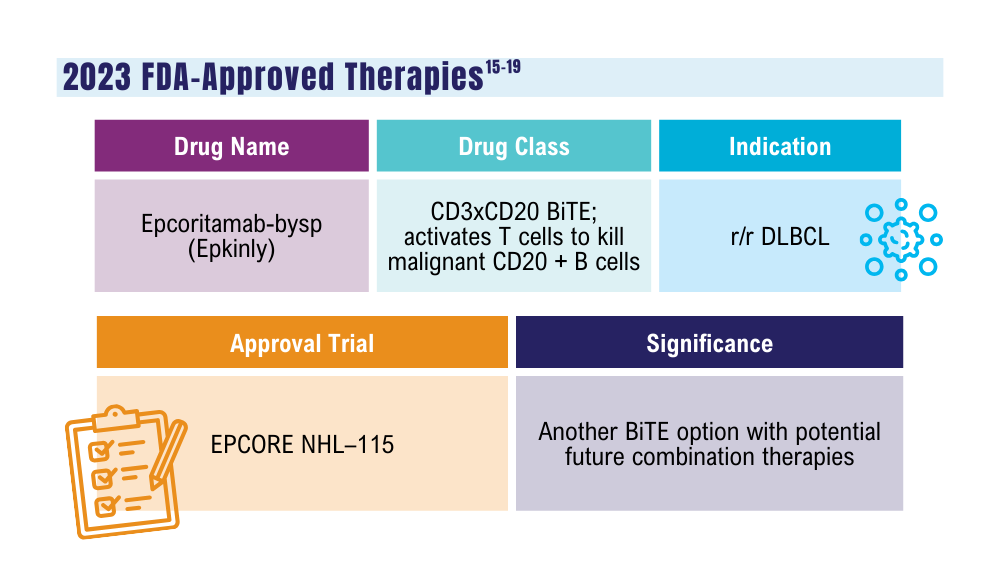User login
Cancer Data Trends 2024: Genitourinary Cancers
1. Sokolova A, Cheng H. Germline testing in prostate cancer: when and who to test. Oncology (Williston Park). 2021;35(10):645-653. doi:10.46883/ONC.2021.3510.0645
2. Tuffaha H, Edmunds K, Fairbairn D, et al. Guidelines for genetic testing in prostate cancer: a scoping review. Prostate Cancer Prostatic Dis. 2023 May 18. doi:10.1038/s41391-023-00676-0
3. National Comprehensive Cancer Network. NCCN clinical practice guidelines for prostate cancer. Version 4.2023. September 7, 2023. Accessed December 20, 2023. https://www.nccn.org/professionals/physician_gls/pdf/prostate.pdf
4. National Precision Oncology Program. PMID 26149669 (e-mail, December 13, 2023).
5. Shevach J, Lynch J, Candelieri-Surette D, et al. Racial disparities in germline testing among men with pancreas, breast and metastatic prostate cancers in two health systems. J Clin Oncol. 2023;41(16 suppl):abstract 10549. https://ascopubs.org/doi/abs/10.1200/JCO.2023.41.16_suppl.10549
6. Velaer K, Thomas IC, Yang J, et al. Clinical laboratory tests associated with survival in patients with metastatic renal cell carcinoma: a laboratory wide association study (LWAS). Urol Oncol. 2022;40(1):12.e23-12.e30. doi:10.1016/j.urolonc.2021.08.011
7. Heng DYC, Xie W, Regan MM, et al. External validation and comparison with other models of the International Metastatic Renal-Cell Carcinoma Database Consortium prognostic model: a population-based study. Lancet Oncol. 2013;14(2):141-148. doi:10.1016/S1470-2045(12)70559-4
8. Aguilar Palacios D, Wilson B, Michael P, et al. A novel metric for hospital quality in kidney cancer surgery: a Veterans Affairs National Health System validation of concept. Urol Pract. 2022;9(3):237-245. doi:10.1097/UPJ.0000000000000294
9. Williams SB, Janes JL, Howard LE, et al. Exposure to Agent Orange and risk of bladder cancer among US veterans. JAMA Netw Open. 2023;6(6):e2320593. doi:10.1001/jamanetworkopen.2023.20593
10. Penn T, Borza T, Liou JI, et al. Impact of Agent Orange exposure on non-muscle invasive bladder cancer outcomes. Urology. 2023;182:175-180. doi:10.1016/j.urology.2023.08.037
1. Sokolova A, Cheng H. Germline testing in prostate cancer: when and who to test. Oncology (Williston Park). 2021;35(10):645-653. doi:10.46883/ONC.2021.3510.0645
2. Tuffaha H, Edmunds K, Fairbairn D, et al. Guidelines for genetic testing in prostate cancer: a scoping review. Prostate Cancer Prostatic Dis. 2023 May 18. doi:10.1038/s41391-023-00676-0
3. National Comprehensive Cancer Network. NCCN clinical practice guidelines for prostate cancer. Version 4.2023. September 7, 2023. Accessed December 20, 2023. https://www.nccn.org/professionals/physician_gls/pdf/prostate.pdf
4. National Precision Oncology Program. PMID 26149669 (e-mail, December 13, 2023).
5. Shevach J, Lynch J, Candelieri-Surette D, et al. Racial disparities in germline testing among men with pancreas, breast and metastatic prostate cancers in two health systems. J Clin Oncol. 2023;41(16 suppl):abstract 10549. https://ascopubs.org/doi/abs/10.1200/JCO.2023.41.16_suppl.10549
6. Velaer K, Thomas IC, Yang J, et al. Clinical laboratory tests associated with survival in patients with metastatic renal cell carcinoma: a laboratory wide association study (LWAS). Urol Oncol. 2022;40(1):12.e23-12.e30. doi:10.1016/j.urolonc.2021.08.011
7. Heng DYC, Xie W, Regan MM, et al. External validation and comparison with other models of the International Metastatic Renal-Cell Carcinoma Database Consortium prognostic model: a population-based study. Lancet Oncol. 2013;14(2):141-148. doi:10.1016/S1470-2045(12)70559-4
8. Aguilar Palacios D, Wilson B, Michael P, et al. A novel metric for hospital quality in kidney cancer surgery: a Veterans Affairs National Health System validation of concept. Urol Pract. 2022;9(3):237-245. doi:10.1097/UPJ.0000000000000294
9. Williams SB, Janes JL, Howard LE, et al. Exposure to Agent Orange and risk of bladder cancer among US veterans. JAMA Netw Open. 2023;6(6):e2320593. doi:10.1001/jamanetworkopen.2023.20593
10. Penn T, Borza T, Liou JI, et al. Impact of Agent Orange exposure on non-muscle invasive bladder cancer outcomes. Urology. 2023;182:175-180. doi:10.1016/j.urology.2023.08.037
1. Sokolova A, Cheng H. Germline testing in prostate cancer: when and who to test. Oncology (Williston Park). 2021;35(10):645-653. doi:10.46883/ONC.2021.3510.0645
2. Tuffaha H, Edmunds K, Fairbairn D, et al. Guidelines for genetic testing in prostate cancer: a scoping review. Prostate Cancer Prostatic Dis. 2023 May 18. doi:10.1038/s41391-023-00676-0
3. National Comprehensive Cancer Network. NCCN clinical practice guidelines for prostate cancer. Version 4.2023. September 7, 2023. Accessed December 20, 2023. https://www.nccn.org/professionals/physician_gls/pdf/prostate.pdf
4. National Precision Oncology Program. PMID 26149669 (e-mail, December 13, 2023).
5. Shevach J, Lynch J, Candelieri-Surette D, et al. Racial disparities in germline testing among men with pancreas, breast and metastatic prostate cancers in two health systems. J Clin Oncol. 2023;41(16 suppl):abstract 10549. https://ascopubs.org/doi/abs/10.1200/JCO.2023.41.16_suppl.10549
6. Velaer K, Thomas IC, Yang J, et al. Clinical laboratory tests associated with survival in patients with metastatic renal cell carcinoma: a laboratory wide association study (LWAS). Urol Oncol. 2022;40(1):12.e23-12.e30. doi:10.1016/j.urolonc.2021.08.011
7. Heng DYC, Xie W, Regan MM, et al. External validation and comparison with other models of the International Metastatic Renal-Cell Carcinoma Database Consortium prognostic model: a population-based study. Lancet Oncol. 2013;14(2):141-148. doi:10.1016/S1470-2045(12)70559-4
8. Aguilar Palacios D, Wilson B, Michael P, et al. A novel metric for hospital quality in kidney cancer surgery: a Veterans Affairs National Health System validation of concept. Urol Pract. 2022;9(3):237-245. doi:10.1097/UPJ.0000000000000294
9. Williams SB, Janes JL, Howard LE, et al. Exposure to Agent Orange and risk of bladder cancer among US veterans. JAMA Netw Open. 2023;6(6):e2320593. doi:10.1001/jamanetworkopen.2023.20593
10. Penn T, Borza T, Liou JI, et al. Impact of Agent Orange exposure on non-muscle invasive bladder cancer outcomes. Urology. 2023;182:175-180. doi:10.1016/j.urology.2023.08.037
Cancer Data Trends 2024: B-Cell Lymphoma
Lu W, Chen W, Zhou Y, et al. A model to predict the prognosis of diffuse large B-cell lymphoma based on ultrasound images. Sci Rep. 2023;13(1):3346. doi:10.1038/s41598-023-30533-y
Leukemia - Chronic lymphocytic - CLL: statistics. Cancer.net. Published February 2023. Accessed January 24, 2024. https://www.cancer.net/cancer-types/leukemia-chronic-lymphocytic-cll/statistics
Harmanen M, Hujo M, Sund R, et al. Survival of patients with mantle cell lymphoma in the rituximab era: retrospective binational analysis between 2000 and 2020. Br J Haematol. 2023;201(1):64-74. doi:10.1111/bjh.18597
Romancik JT, Cohen JB. Management of older adults with mantle cell lymphoma. Drugs Aging. 2020;37(7):469-481. doi:10.1007/s40266-020-00765-y
Marginal zone lymphoma (MZL). Leukemia and Lymphoma Society. Accessed January 24, 2024. https://www.lls.org/research/marginal-zone-lymphoma-mzl
Understanding lymphoma: diffuse large B-cell lymphoma. Lymphoma Research Foundation fact sheet. Updated 2023. Accessed January 24, 2024 https://lymphoma.org/wp-content/uploads/2023/10/LRF_Understanding_Lymphoma_Diffuse_Large_B_Cell_Lymphoma_Fact_Sheet.pdf
Key statistics for non-Hodgkin lymphoma. American Cancer Society. Updated January 17, 2024. Accessed January 24, 2024. https://www.cancer.org/cancer/types/non-hodgkin-lymphoma/about/key-statistics.html
Zullig LL, Raska W, McWhirter G, et al. Veterans Health Administration National TeleOncology Service. JCO Oncol Pract. 2023;19(4):e504-e510. doi:10.1200/OP.22.00455
Lin C, Zhou KI, Burningham ZR, et al. Telemedicine-supervised cancer therapy for patients with an aggressive lymphoma and metastatic lung cancer in the U.S. Veterans Affairs National TeleOncology Service. J Clin Oncol. 2023;41(16 suppl)16:Abstract 1602. doi:10.1200/JCO.2023.41.16_suppl.1602
Zhang MC, Tian S, Fu D, et al. Genetic subtype-guided immunochemotherapy in diffuse large B-cell lymphoma: the randomized GUIDANCE-01 trial. Cancer Cell. 2023;41(10):1705-1716.e5. doi:10.1016/j.ccell.2023.09.004
Mato AR, Woyach JA, Brown JR, et al. Pirtobrutinib after a covalent BTK inhibitor in chronic lymphocytic leukemia. N Engl J Med. 2023;389(1):33-44. doi:10.1056/NEJMoa2300696
Sterner RC, Sterner RM. CAR-T cell therapy: current limitations and potential strategies. Blood Cancer J. 2021;11(4):69. doi:10.1038/s41408-021-00459-7
Caribou Biosciences reports positive clinical data from dose escalation of CB-010 ANTLER phase 1 trial in r/r B-NHL [news release]. Globalnewswire.com. Published July 13, 2023. Accessed January 24, 2024. https://www.globenewswire.com/news-release/2023/07/13/2704702/0/en/Caribou-Biosciences-Reports-Positive-Clinical-Data-from-Dose-Escalation-of-CB-010-ANTLER-Phase-1-Trial-in-r-r-B-NHL.html
Ma J, Mo Y, Tang M, et al. Bispecific antibodies: from research to clinical application. Front Immunol. 2021;12:626616. doi:10.3389/fimmu.2021.626616
Davis JA, Granger K, Sakowski A, et al. Dual target dilemma: navigating epcoritamab vs. glofitamab in relapsed refractory diffuse large B-cell lymphoma. Expert Rev Hematol. 2023;16(12):915-918. doi:10.1080/17474086.2023.2285978
Lynch RC, Poh C, Ujjani CS, et al. Polatuzumab vedotin with infusional chemotherapy for untreated aggressive B-cell non-Hodgkin lymphomas. Blood Adv. 2023;7(11):2449-2458. doi:10.1182/bloodadvances.2022009145
Thompson PA, Tam CS. Pirtobrutinib: a new hope for patients with BTK inhibitor-refractory lymphoproliferative disorders. Blood. 2023;141(26):3137-3142. doi:10.1182/blood.2023020240
US Food and Drug Administration. FDA approves zanubrutinib for chronic lymphocytic leukemia or small lymphocytic lymphoma. Published January 19, 2023. Accessed January 24, 2024. https://www.fda.gov/drugs/resources-information-approved-drugs/fda-approves-zanubrutinib-chronic-lymphocytic-leukemia-or-small-lymphocytic-lymphoma
US Food and Drug Administration. FDA grants accelerated approval to glofitamab-gxbm for selected relapsed or refractory large B-cell lymphomas. Published June 16, 2023. Accessed January 24, 2024. https://www.fda.gov/drugs/drug-approvals-and-databases/fda-grants-accelerated-approval-glofitamab-gxbm-selected-relapsed-or-refractory-large-b-cell
Lu W, Chen W, Zhou Y, et al. A model to predict the prognosis of diffuse large B-cell lymphoma based on ultrasound images. Sci Rep. 2023;13(1):3346. doi:10.1038/s41598-023-30533-y
Leukemia - Chronic lymphocytic - CLL: statistics. Cancer.net. Published February 2023. Accessed January 24, 2024. https://www.cancer.net/cancer-types/leukemia-chronic-lymphocytic-cll/statistics
Harmanen M, Hujo M, Sund R, et al. Survival of patients with mantle cell lymphoma in the rituximab era: retrospective binational analysis between 2000 and 2020. Br J Haematol. 2023;201(1):64-74. doi:10.1111/bjh.18597
Romancik JT, Cohen JB. Management of older adults with mantle cell lymphoma. Drugs Aging. 2020;37(7):469-481. doi:10.1007/s40266-020-00765-y
Marginal zone lymphoma (MZL). Leukemia and Lymphoma Society. Accessed January 24, 2024. https://www.lls.org/research/marginal-zone-lymphoma-mzl
Understanding lymphoma: diffuse large B-cell lymphoma. Lymphoma Research Foundation fact sheet. Updated 2023. Accessed January 24, 2024 https://lymphoma.org/wp-content/uploads/2023/10/LRF_Understanding_Lymphoma_Diffuse_Large_B_Cell_Lymphoma_Fact_Sheet.pdf
Key statistics for non-Hodgkin lymphoma. American Cancer Society. Updated January 17, 2024. Accessed January 24, 2024. https://www.cancer.org/cancer/types/non-hodgkin-lymphoma/about/key-statistics.html
Zullig LL, Raska W, McWhirter G, et al. Veterans Health Administration National TeleOncology Service. JCO Oncol Pract. 2023;19(4):e504-e510. doi:10.1200/OP.22.00455
Lin C, Zhou KI, Burningham ZR, et al. Telemedicine-supervised cancer therapy for patients with an aggressive lymphoma and metastatic lung cancer in the U.S. Veterans Affairs National TeleOncology Service. J Clin Oncol. 2023;41(16 suppl)16:Abstract 1602. doi:10.1200/JCO.2023.41.16_suppl.1602
Zhang MC, Tian S, Fu D, et al. Genetic subtype-guided immunochemotherapy in diffuse large B-cell lymphoma: the randomized GUIDANCE-01 trial. Cancer Cell. 2023;41(10):1705-1716.e5. doi:10.1016/j.ccell.2023.09.004
Mato AR, Woyach JA, Brown JR, et al. Pirtobrutinib after a covalent BTK inhibitor in chronic lymphocytic leukemia. N Engl J Med. 2023;389(1):33-44. doi:10.1056/NEJMoa2300696
Sterner RC, Sterner RM. CAR-T cell therapy: current limitations and potential strategies. Blood Cancer J. 2021;11(4):69. doi:10.1038/s41408-021-00459-7
Caribou Biosciences reports positive clinical data from dose escalation of CB-010 ANTLER phase 1 trial in r/r B-NHL [news release]. Globalnewswire.com. Published July 13, 2023. Accessed January 24, 2024. https://www.globenewswire.com/news-release/2023/07/13/2704702/0/en/Caribou-Biosciences-Reports-Positive-Clinical-Data-from-Dose-Escalation-of-CB-010-ANTLER-Phase-1-Trial-in-r-r-B-NHL.html
Ma J, Mo Y, Tang M, et al. Bispecific antibodies: from research to clinical application. Front Immunol. 2021;12:626616. doi:10.3389/fimmu.2021.626616
Davis JA, Granger K, Sakowski A, et al. Dual target dilemma: navigating epcoritamab vs. glofitamab in relapsed refractory diffuse large B-cell lymphoma. Expert Rev Hematol. 2023;16(12):915-918. doi:10.1080/17474086.2023.2285978
Lynch RC, Poh C, Ujjani CS, et al. Polatuzumab vedotin with infusional chemotherapy for untreated aggressive B-cell non-Hodgkin lymphomas. Blood Adv. 2023;7(11):2449-2458. doi:10.1182/bloodadvances.2022009145
Thompson PA, Tam CS. Pirtobrutinib: a new hope for patients with BTK inhibitor-refractory lymphoproliferative disorders. Blood. 2023;141(26):3137-3142. doi:10.1182/blood.2023020240
US Food and Drug Administration. FDA approves zanubrutinib for chronic lymphocytic leukemia or small lymphocytic lymphoma. Published January 19, 2023. Accessed January 24, 2024. https://www.fda.gov/drugs/resources-information-approved-drugs/fda-approves-zanubrutinib-chronic-lymphocytic-leukemia-or-small-lymphocytic-lymphoma
US Food and Drug Administration. FDA grants accelerated approval to glofitamab-gxbm for selected relapsed or refractory large B-cell lymphomas. Published June 16, 2023. Accessed January 24, 2024. https://www.fda.gov/drugs/drug-approvals-and-databases/fda-grants-accelerated-approval-glofitamab-gxbm-selected-relapsed-or-refractory-large-b-cell
Lu W, Chen W, Zhou Y, et al. A model to predict the prognosis of diffuse large B-cell lymphoma based on ultrasound images. Sci Rep. 2023;13(1):3346. doi:10.1038/s41598-023-30533-y
Leukemia - Chronic lymphocytic - CLL: statistics. Cancer.net. Published February 2023. Accessed January 24, 2024. https://www.cancer.net/cancer-types/leukemia-chronic-lymphocytic-cll/statistics
Harmanen M, Hujo M, Sund R, et al. Survival of patients with mantle cell lymphoma in the rituximab era: retrospective binational analysis between 2000 and 2020. Br J Haematol. 2023;201(1):64-74. doi:10.1111/bjh.18597
Romancik JT, Cohen JB. Management of older adults with mantle cell lymphoma. Drugs Aging. 2020;37(7):469-481. doi:10.1007/s40266-020-00765-y
Marginal zone lymphoma (MZL). Leukemia and Lymphoma Society. Accessed January 24, 2024. https://www.lls.org/research/marginal-zone-lymphoma-mzl
Understanding lymphoma: diffuse large B-cell lymphoma. Lymphoma Research Foundation fact sheet. Updated 2023. Accessed January 24, 2024 https://lymphoma.org/wp-content/uploads/2023/10/LRF_Understanding_Lymphoma_Diffuse_Large_B_Cell_Lymphoma_Fact_Sheet.pdf
Key statistics for non-Hodgkin lymphoma. American Cancer Society. Updated January 17, 2024. Accessed January 24, 2024. https://www.cancer.org/cancer/types/non-hodgkin-lymphoma/about/key-statistics.html
Zullig LL, Raska W, McWhirter G, et al. Veterans Health Administration National TeleOncology Service. JCO Oncol Pract. 2023;19(4):e504-e510. doi:10.1200/OP.22.00455
Lin C, Zhou KI, Burningham ZR, et al. Telemedicine-supervised cancer therapy for patients with an aggressive lymphoma and metastatic lung cancer in the U.S. Veterans Affairs National TeleOncology Service. J Clin Oncol. 2023;41(16 suppl)16:Abstract 1602. doi:10.1200/JCO.2023.41.16_suppl.1602
Zhang MC, Tian S, Fu D, et al. Genetic subtype-guided immunochemotherapy in diffuse large B-cell lymphoma: the randomized GUIDANCE-01 trial. Cancer Cell. 2023;41(10):1705-1716.e5. doi:10.1016/j.ccell.2023.09.004
Mato AR, Woyach JA, Brown JR, et al. Pirtobrutinib after a covalent BTK inhibitor in chronic lymphocytic leukemia. N Engl J Med. 2023;389(1):33-44. doi:10.1056/NEJMoa2300696
Sterner RC, Sterner RM. CAR-T cell therapy: current limitations and potential strategies. Blood Cancer J. 2021;11(4):69. doi:10.1038/s41408-021-00459-7
Caribou Biosciences reports positive clinical data from dose escalation of CB-010 ANTLER phase 1 trial in r/r B-NHL [news release]. Globalnewswire.com. Published July 13, 2023. Accessed January 24, 2024. https://www.globenewswire.com/news-release/2023/07/13/2704702/0/en/Caribou-Biosciences-Reports-Positive-Clinical-Data-from-Dose-Escalation-of-CB-010-ANTLER-Phase-1-Trial-in-r-r-B-NHL.html
Ma J, Mo Y, Tang M, et al. Bispecific antibodies: from research to clinical application. Front Immunol. 2021;12:626616. doi:10.3389/fimmu.2021.626616
Davis JA, Granger K, Sakowski A, et al. Dual target dilemma: navigating epcoritamab vs. glofitamab in relapsed refractory diffuse large B-cell lymphoma. Expert Rev Hematol. 2023;16(12):915-918. doi:10.1080/17474086.2023.2285978
Lynch RC, Poh C, Ujjani CS, et al. Polatuzumab vedotin with infusional chemotherapy for untreated aggressive B-cell non-Hodgkin lymphomas. Blood Adv. 2023;7(11):2449-2458. doi:10.1182/bloodadvances.2022009145
Thompson PA, Tam CS. Pirtobrutinib: a new hope for patients with BTK inhibitor-refractory lymphoproliferative disorders. Blood. 2023;141(26):3137-3142. doi:10.1182/blood.2023020240
US Food and Drug Administration. FDA approves zanubrutinib for chronic lymphocytic leukemia or small lymphocytic lymphoma. Published January 19, 2023. Accessed January 24, 2024. https://www.fda.gov/drugs/resources-information-approved-drugs/fda-approves-zanubrutinib-chronic-lymphocytic-leukemia-or-small-lymphocytic-lymphoma
US Food and Drug Administration. FDA grants accelerated approval to glofitamab-gxbm for selected relapsed or refractory large B-cell lymphomas. Published June 16, 2023. Accessed January 24, 2024. https://www.fda.gov/drugs/drug-approvals-and-databases/fda-grants-accelerated-approval-glofitamab-gxbm-selected-relapsed-or-refractory-large-b-cell
Not Even Secondary Endpoints Support BTK Inhibitor in Phase 3 MS Trial
WEST PALM BEACH, FLORIDA — Top-line results of two phase 3 trials evaluating the BTK inhibitor evobrutinib for treatment of multiple sclerosis (MS) were negative when released several months ago, but the hope for a signal of benefit on secondary endpoints was dashed when the full results of the trials were presented at the 2024 Americas Committee for Treatment and Research in Multiple Sclerosis (ACTRIMS) Forum.
Based on prior drug development, including the promise seen in a phase 2 trial, “these negative results were quite disappointing,” reported Xavier Montalban, MD, director, department of neurology, Catalunya Center for Multiple Sclerosis, Hospital Universitario Vall d’Hebron, Barcelona, Spain.
In the evolutionRMS1 and 2 phase 3 trials, 2285 relapsing-remitting MS patients with active disease were randomized to 45 mg of twice-daily oral evobrutinib or 14 mg once-daily teriflunomide, a pyrimidine synthesis inhibitor already widely used for the treatment of MS. The trial, conducted in 52 countries, was double-blind and double-dummy.
When released at the end of 2023, the primary endpoints of the annualized relapse rate (ARR) were identical or nearly identical for evobrutinib relative to teriflunomide in RMS1 (0.15 vs 0.14) and RMS2 (0.11 vs 0.11).
Yet, many researchers were still hoping to see some greater advantage for the BTK inhibitor, which modulates B cell activity and inhibits activation of inflammatory cells in the central nervous system, on one or more secondary endpoints.
“The primary ARR endpoint was mandated by the regulatory agencies,” explained Mark S. Freedman, MD, director of the MS Research Unit, University of Ottawa, Canada. Although he was not greatly surprised that evobrutinib failed to show superiority over the already low ARR rates typically achieved on teriflunomide, he had held out hope that a benefit on one or more secondary outcomes would support BTK inhibition as an MS target.
However, the time to confirmed disability progression and time to confirmed disability improvement among the two treatment groups traced the same course over 24 weeks. Graphically, the lines were nearly superimposed.
No Outcome Supported an Evobrutinib Advantage
Numerically, the mean number of T1 gadolinium-enhancing lesions was greater among those randomized to evobrutinib while the mean number of new or enlarging T2 lesions was lower. However, none of these differences in either study reached statistical significance.
The lower serum neurofilament light chain (sNfL) levels were significant (P = .032) in one of the two trials, but the difference was modest, and Dr. Montalban stated that the difference “was probably not clinically significant.”
Almost all of the patients had multiple relapses before being enrolled in the study, but only 36.5% had received a prior disease-modifying therapy. According to Dr. Montalban, the baseline characteristics of the patients enrolled were “nothing special,” in that they were very much “like the types of patients enrolled in trials like these.”
In general, both drugs were well tolerated with a comparable safety profile. The exception was a greater proportion of patients randomized to evobrutinib who developed elevated liver function tests, including a greater proportion with a level at least 5 times the upper limit of normal. All normalized after treatment was discontinued.
This is the first phase 3 trial of a BTK inhibitor in MS, according to Dr. Montalban, who pointed out that evobrutinib did perform as well as a highly active agent, even if it could not show superiority.
There is limited likelihood that further ongoing analyses will uncover meaningful activity not detected in the primary and secondary outcomes, but Dr. Montalban said that there is a possibility that a higher dose or a BTK inhibitor with different characteristics might still produce the types of clinical benefits hypothesized in this initial trial.
Asked to speculate about the results if the RM1 and RM2 trials had a noninferiority rather than a superiority design been employed, Dr. Montalban said that evobrutinib relative to teriflunomide appears to be “similar but more toxic.”
The recent excitement building for the potential of BTK inhibitors in MS was not helped by a second, but much smaller, late-breaker study that evaluated tolebrutinib. The primary endpoint of that study, conducted with just seven patients, was complete resolution of paramagnetic rim lesions (PRL), a prognostically important composition of macrophages, microglia, and iron seen in the central nervous system (CNS) on imaging.
No Resolution of CNS Lesions
Even after 48 weeks, none of the lesions had resolved, according to Maria I. Gaitán, MD, acting director of the Translational Neuroradiology Unit of the National Institute of Neurological Disorders and Stroke (NINDS), Bethesda, Maryland.
Again, although these findings were disappointing, Dr. Gaitán said there are a number of explanations for the result that do not preclude a benefit from BTK inhibitors in future studies.
“Complete resolution of PRL might be a bar that was too high,” she said, noting that favorable changes in these lesions could have occurred even if the characteristic iron deposits persisted. She also suggested that dosing might not have been optimized to halt or reverse disease activity in the CNS. Like Dr. Montalban, she suggested that BTK inhibitors with different characteristics might succeed where tolebrutinib failed.
Dr. Freedman, current president of ACTRIMS, agreed that these data should not be interpreted as ruling out a clinical role for BTK inhibitors. Pointing to the substantial body of data supporting this mechanism for reversing inflammation in the CNS, he declared that “the story is not over.”
Dr. Montalban reported financial relationships with Actelion, Alexion, Bayer, Biogen, Bristol-Myers Squibb, Celgene, EMD Serono, Hoffman La Roche, Immunic, Janssen, Mylan, NervGen, Novartis, Sanofi-Genzyme, Teva, TG Therapeutics, and Merck, which provided funding for the RMS 1 and 2 trials. Dr. Freedman reported financial relationships with Actelion, Alexion, Bayer, Biogen, Celgene, EMD Serono, Hoffman La Roche, Merck, Novartis, and Teva Canada Innovation. Dr. Gaitán reported no potential conflicts of interest.
WEST PALM BEACH, FLORIDA — Top-line results of two phase 3 trials evaluating the BTK inhibitor evobrutinib for treatment of multiple sclerosis (MS) were negative when released several months ago, but the hope for a signal of benefit on secondary endpoints was dashed when the full results of the trials were presented at the 2024 Americas Committee for Treatment and Research in Multiple Sclerosis (ACTRIMS) Forum.
Based on prior drug development, including the promise seen in a phase 2 trial, “these negative results were quite disappointing,” reported Xavier Montalban, MD, director, department of neurology, Catalunya Center for Multiple Sclerosis, Hospital Universitario Vall d’Hebron, Barcelona, Spain.
In the evolutionRMS1 and 2 phase 3 trials, 2285 relapsing-remitting MS patients with active disease were randomized to 45 mg of twice-daily oral evobrutinib or 14 mg once-daily teriflunomide, a pyrimidine synthesis inhibitor already widely used for the treatment of MS. The trial, conducted in 52 countries, was double-blind and double-dummy.
When released at the end of 2023, the primary endpoints of the annualized relapse rate (ARR) were identical or nearly identical for evobrutinib relative to teriflunomide in RMS1 (0.15 vs 0.14) and RMS2 (0.11 vs 0.11).
Yet, many researchers were still hoping to see some greater advantage for the BTK inhibitor, which modulates B cell activity and inhibits activation of inflammatory cells in the central nervous system, on one or more secondary endpoints.
“The primary ARR endpoint was mandated by the regulatory agencies,” explained Mark S. Freedman, MD, director of the MS Research Unit, University of Ottawa, Canada. Although he was not greatly surprised that evobrutinib failed to show superiority over the already low ARR rates typically achieved on teriflunomide, he had held out hope that a benefit on one or more secondary outcomes would support BTK inhibition as an MS target.
However, the time to confirmed disability progression and time to confirmed disability improvement among the two treatment groups traced the same course over 24 weeks. Graphically, the lines were nearly superimposed.
No Outcome Supported an Evobrutinib Advantage
Numerically, the mean number of T1 gadolinium-enhancing lesions was greater among those randomized to evobrutinib while the mean number of new or enlarging T2 lesions was lower. However, none of these differences in either study reached statistical significance.
The lower serum neurofilament light chain (sNfL) levels were significant (P = .032) in one of the two trials, but the difference was modest, and Dr. Montalban stated that the difference “was probably not clinically significant.”
Almost all of the patients had multiple relapses before being enrolled in the study, but only 36.5% had received a prior disease-modifying therapy. According to Dr. Montalban, the baseline characteristics of the patients enrolled were “nothing special,” in that they were very much “like the types of patients enrolled in trials like these.”
In general, both drugs were well tolerated with a comparable safety profile. The exception was a greater proportion of patients randomized to evobrutinib who developed elevated liver function tests, including a greater proportion with a level at least 5 times the upper limit of normal. All normalized after treatment was discontinued.
This is the first phase 3 trial of a BTK inhibitor in MS, according to Dr. Montalban, who pointed out that evobrutinib did perform as well as a highly active agent, even if it could not show superiority.
There is limited likelihood that further ongoing analyses will uncover meaningful activity not detected in the primary and secondary outcomes, but Dr. Montalban said that there is a possibility that a higher dose or a BTK inhibitor with different characteristics might still produce the types of clinical benefits hypothesized in this initial trial.
Asked to speculate about the results if the RM1 and RM2 trials had a noninferiority rather than a superiority design been employed, Dr. Montalban said that evobrutinib relative to teriflunomide appears to be “similar but more toxic.”
The recent excitement building for the potential of BTK inhibitors in MS was not helped by a second, but much smaller, late-breaker study that evaluated tolebrutinib. The primary endpoint of that study, conducted with just seven patients, was complete resolution of paramagnetic rim lesions (PRL), a prognostically important composition of macrophages, microglia, and iron seen in the central nervous system (CNS) on imaging.
No Resolution of CNS Lesions
Even after 48 weeks, none of the lesions had resolved, according to Maria I. Gaitán, MD, acting director of the Translational Neuroradiology Unit of the National Institute of Neurological Disorders and Stroke (NINDS), Bethesda, Maryland.
Again, although these findings were disappointing, Dr. Gaitán said there are a number of explanations for the result that do not preclude a benefit from BTK inhibitors in future studies.
“Complete resolution of PRL might be a bar that was too high,” she said, noting that favorable changes in these lesions could have occurred even if the characteristic iron deposits persisted. She also suggested that dosing might not have been optimized to halt or reverse disease activity in the CNS. Like Dr. Montalban, she suggested that BTK inhibitors with different characteristics might succeed where tolebrutinib failed.
Dr. Freedman, current president of ACTRIMS, agreed that these data should not be interpreted as ruling out a clinical role for BTK inhibitors. Pointing to the substantial body of data supporting this mechanism for reversing inflammation in the CNS, he declared that “the story is not over.”
Dr. Montalban reported financial relationships with Actelion, Alexion, Bayer, Biogen, Bristol-Myers Squibb, Celgene, EMD Serono, Hoffman La Roche, Immunic, Janssen, Mylan, NervGen, Novartis, Sanofi-Genzyme, Teva, TG Therapeutics, and Merck, which provided funding for the RMS 1 and 2 trials. Dr. Freedman reported financial relationships with Actelion, Alexion, Bayer, Biogen, Celgene, EMD Serono, Hoffman La Roche, Merck, Novartis, and Teva Canada Innovation. Dr. Gaitán reported no potential conflicts of interest.
WEST PALM BEACH, FLORIDA — Top-line results of two phase 3 trials evaluating the BTK inhibitor evobrutinib for treatment of multiple sclerosis (MS) were negative when released several months ago, but the hope for a signal of benefit on secondary endpoints was dashed when the full results of the trials were presented at the 2024 Americas Committee for Treatment and Research in Multiple Sclerosis (ACTRIMS) Forum.
Based on prior drug development, including the promise seen in a phase 2 trial, “these negative results were quite disappointing,” reported Xavier Montalban, MD, director, department of neurology, Catalunya Center for Multiple Sclerosis, Hospital Universitario Vall d’Hebron, Barcelona, Spain.
In the evolutionRMS1 and 2 phase 3 trials, 2285 relapsing-remitting MS patients with active disease were randomized to 45 mg of twice-daily oral evobrutinib or 14 mg once-daily teriflunomide, a pyrimidine synthesis inhibitor already widely used for the treatment of MS. The trial, conducted in 52 countries, was double-blind and double-dummy.
When released at the end of 2023, the primary endpoints of the annualized relapse rate (ARR) were identical or nearly identical for evobrutinib relative to teriflunomide in RMS1 (0.15 vs 0.14) and RMS2 (0.11 vs 0.11).
Yet, many researchers were still hoping to see some greater advantage for the BTK inhibitor, which modulates B cell activity and inhibits activation of inflammatory cells in the central nervous system, on one or more secondary endpoints.
“The primary ARR endpoint was mandated by the regulatory agencies,” explained Mark S. Freedman, MD, director of the MS Research Unit, University of Ottawa, Canada. Although he was not greatly surprised that evobrutinib failed to show superiority over the already low ARR rates typically achieved on teriflunomide, he had held out hope that a benefit on one or more secondary outcomes would support BTK inhibition as an MS target.
However, the time to confirmed disability progression and time to confirmed disability improvement among the two treatment groups traced the same course over 24 weeks. Graphically, the lines were nearly superimposed.
No Outcome Supported an Evobrutinib Advantage
Numerically, the mean number of T1 gadolinium-enhancing lesions was greater among those randomized to evobrutinib while the mean number of new or enlarging T2 lesions was lower. However, none of these differences in either study reached statistical significance.
The lower serum neurofilament light chain (sNfL) levels were significant (P = .032) in one of the two trials, but the difference was modest, and Dr. Montalban stated that the difference “was probably not clinically significant.”
Almost all of the patients had multiple relapses before being enrolled in the study, but only 36.5% had received a prior disease-modifying therapy. According to Dr. Montalban, the baseline characteristics of the patients enrolled were “nothing special,” in that they were very much “like the types of patients enrolled in trials like these.”
In general, both drugs were well tolerated with a comparable safety profile. The exception was a greater proportion of patients randomized to evobrutinib who developed elevated liver function tests, including a greater proportion with a level at least 5 times the upper limit of normal. All normalized after treatment was discontinued.
This is the first phase 3 trial of a BTK inhibitor in MS, according to Dr. Montalban, who pointed out that evobrutinib did perform as well as a highly active agent, even if it could not show superiority.
There is limited likelihood that further ongoing analyses will uncover meaningful activity not detected in the primary and secondary outcomes, but Dr. Montalban said that there is a possibility that a higher dose or a BTK inhibitor with different characteristics might still produce the types of clinical benefits hypothesized in this initial trial.
Asked to speculate about the results if the RM1 and RM2 trials had a noninferiority rather than a superiority design been employed, Dr. Montalban said that evobrutinib relative to teriflunomide appears to be “similar but more toxic.”
The recent excitement building for the potential of BTK inhibitors in MS was not helped by a second, but much smaller, late-breaker study that evaluated tolebrutinib. The primary endpoint of that study, conducted with just seven patients, was complete resolution of paramagnetic rim lesions (PRL), a prognostically important composition of macrophages, microglia, and iron seen in the central nervous system (CNS) on imaging.
No Resolution of CNS Lesions
Even after 48 weeks, none of the lesions had resolved, according to Maria I. Gaitán, MD, acting director of the Translational Neuroradiology Unit of the National Institute of Neurological Disorders and Stroke (NINDS), Bethesda, Maryland.
Again, although these findings were disappointing, Dr. Gaitán said there are a number of explanations for the result that do not preclude a benefit from BTK inhibitors in future studies.
“Complete resolution of PRL might be a bar that was too high,” she said, noting that favorable changes in these lesions could have occurred even if the characteristic iron deposits persisted. She also suggested that dosing might not have been optimized to halt or reverse disease activity in the CNS. Like Dr. Montalban, she suggested that BTK inhibitors with different characteristics might succeed where tolebrutinib failed.
Dr. Freedman, current president of ACTRIMS, agreed that these data should not be interpreted as ruling out a clinical role for BTK inhibitors. Pointing to the substantial body of data supporting this mechanism for reversing inflammation in the CNS, he declared that “the story is not over.”
Dr. Montalban reported financial relationships with Actelion, Alexion, Bayer, Biogen, Bristol-Myers Squibb, Celgene, EMD Serono, Hoffman La Roche, Immunic, Janssen, Mylan, NervGen, Novartis, Sanofi-Genzyme, Teva, TG Therapeutics, and Merck, which provided funding for the RMS 1 and 2 trials. Dr. Freedman reported financial relationships with Actelion, Alexion, Bayer, Biogen, Celgene, EMD Serono, Hoffman La Roche, Merck, Novartis, and Teva Canada Innovation. Dr. Gaitán reported no potential conflicts of interest.
FROM ACTRIMS FORUM 2024
Long-term Fremanezumab Effective and Safe in Hard-to-Treat Migraine
Key clinical point: Long-term fremanezumab treatment appears to be highly effective, safe, and well tolerated in patients with high-frequency episodic migraine (HFEM) or chronic migraine (CM) who have experienced multiple (more than three) treatment failures and have various comorbidities.
Major finding: At 48 weeks, fremanezumab led to significant reductions in the monthly migraine days in patients with HFEM (mean change −6.4 days) and monthly headache days in patients with CM (mean change −14.5 days; both P < .001). Overall, 7.8% of patients reported mild and transient treatment-emergent adverse events, and none of the patients discontinued the treatment for any reason.
Study details: This prospective, multicenter, cohort study included 130 patients with migraine (49 with HEFM; 81 with CM) and multiple treatment failures who received fremanezumab for at least 48 weeks (≥ 12 doses).
Disclosures: This study was partially supported by the Italian Ministry of Health (Institutional Funding Ricerca Corrente) San Raffaele and Fondazione Italiana Cefalee. Several authors declared receiving travel grants, research support, or honoraria from or having other ties with various sources. Twenty authors declared no conflicts of interest.
Source: Barbanti P, Egeo G, Proietti S, et al for the Italian Migraine Registry study group. Assessing the long-term (48-week) effectiveness, safety, and tolerability of fremanezumab in migraine in real life: Insights from the multicenter, prospective, FRIEND3 study. Neurol Ther. 2024 (Mar 7). doi: 10.1007/s40120-024-00591-z Source
Key clinical point: Long-term fremanezumab treatment appears to be highly effective, safe, and well tolerated in patients with high-frequency episodic migraine (HFEM) or chronic migraine (CM) who have experienced multiple (more than three) treatment failures and have various comorbidities.
Major finding: At 48 weeks, fremanezumab led to significant reductions in the monthly migraine days in patients with HFEM (mean change −6.4 days) and monthly headache days in patients with CM (mean change −14.5 days; both P < .001). Overall, 7.8% of patients reported mild and transient treatment-emergent adverse events, and none of the patients discontinued the treatment for any reason.
Study details: This prospective, multicenter, cohort study included 130 patients with migraine (49 with HEFM; 81 with CM) and multiple treatment failures who received fremanezumab for at least 48 weeks (≥ 12 doses).
Disclosures: This study was partially supported by the Italian Ministry of Health (Institutional Funding Ricerca Corrente) San Raffaele and Fondazione Italiana Cefalee. Several authors declared receiving travel grants, research support, or honoraria from or having other ties with various sources. Twenty authors declared no conflicts of interest.
Source: Barbanti P, Egeo G, Proietti S, et al for the Italian Migraine Registry study group. Assessing the long-term (48-week) effectiveness, safety, and tolerability of fremanezumab in migraine in real life: Insights from the multicenter, prospective, FRIEND3 study. Neurol Ther. 2024 (Mar 7). doi: 10.1007/s40120-024-00591-z Source
Key clinical point: Long-term fremanezumab treatment appears to be highly effective, safe, and well tolerated in patients with high-frequency episodic migraine (HFEM) or chronic migraine (CM) who have experienced multiple (more than three) treatment failures and have various comorbidities.
Major finding: At 48 weeks, fremanezumab led to significant reductions in the monthly migraine days in patients with HFEM (mean change −6.4 days) and monthly headache days in patients with CM (mean change −14.5 days; both P < .001). Overall, 7.8% of patients reported mild and transient treatment-emergent adverse events, and none of the patients discontinued the treatment for any reason.
Study details: This prospective, multicenter, cohort study included 130 patients with migraine (49 with HEFM; 81 with CM) and multiple treatment failures who received fremanezumab for at least 48 weeks (≥ 12 doses).
Disclosures: This study was partially supported by the Italian Ministry of Health (Institutional Funding Ricerca Corrente) San Raffaele and Fondazione Italiana Cefalee. Several authors declared receiving travel grants, research support, or honoraria from or having other ties with various sources. Twenty authors declared no conflicts of interest.
Source: Barbanti P, Egeo G, Proietti S, et al for the Italian Migraine Registry study group. Assessing the long-term (48-week) effectiveness, safety, and tolerability of fremanezumab in migraine in real life: Insights from the multicenter, prospective, FRIEND3 study. Neurol Ther. 2024 (Mar 7). doi: 10.1007/s40120-024-00591-z Source
Endometriosis and Concomitant Migraine Tied to Severe Pain and Disability
Key clinical point: Untreated women with endometriosis and concomitant migraine (EM-MO) experienced more severe symptoms and frequent painful days than those with endometriosis alone (EM-O) or migraine alone (MG-O).
Major finding: The prevalence of severe adenomyosis (14% vs 4%; P = .027) and posterior (48% vs 30%; P = .031) and anterior (10% vs 2%; P = .029) deep infiltrating endometriosis was higher in women with EM-MO vs EM-O. Women with EM-MO vs MG-O had significantly higher pain intensity (visual analogue scale scores 8.44 vs 7.74; P = .004), monthly migraine days (6.68 vs 5.44 days; P = .042), and Headache Impact Test-6 scores (62.33 vs 57.38; P = .010).
Study details: This prospective case-control study included 50 women with EM-MO and matched control patients with EM-O (n = 100) and MG-O (n = 100) who underwent pelvic and neurologic examination.
Disclosures: This study did not receive any funding. The authors declared no conflicts of interest.
Source: Selntigia A, Exacoustos C, Ortoleva C, et al. Correlation between endometriosis and migraine features: Results from a prospective case-control study. Cephalalgia. 2024 (Mar 4). doi: 10.1177/03331024241235 Source
Key clinical point: Untreated women with endometriosis and concomitant migraine (EM-MO) experienced more severe symptoms and frequent painful days than those with endometriosis alone (EM-O) or migraine alone (MG-O).
Major finding: The prevalence of severe adenomyosis (14% vs 4%; P = .027) and posterior (48% vs 30%; P = .031) and anterior (10% vs 2%; P = .029) deep infiltrating endometriosis was higher in women with EM-MO vs EM-O. Women with EM-MO vs MG-O had significantly higher pain intensity (visual analogue scale scores 8.44 vs 7.74; P = .004), monthly migraine days (6.68 vs 5.44 days; P = .042), and Headache Impact Test-6 scores (62.33 vs 57.38; P = .010).
Study details: This prospective case-control study included 50 women with EM-MO and matched control patients with EM-O (n = 100) and MG-O (n = 100) who underwent pelvic and neurologic examination.
Disclosures: This study did not receive any funding. The authors declared no conflicts of interest.
Source: Selntigia A, Exacoustos C, Ortoleva C, et al. Correlation between endometriosis and migraine features: Results from a prospective case-control study. Cephalalgia. 2024 (Mar 4). doi: 10.1177/03331024241235 Source
Key clinical point: Untreated women with endometriosis and concomitant migraine (EM-MO) experienced more severe symptoms and frequent painful days than those with endometriosis alone (EM-O) or migraine alone (MG-O).
Major finding: The prevalence of severe adenomyosis (14% vs 4%; P = .027) and posterior (48% vs 30%; P = .031) and anterior (10% vs 2%; P = .029) deep infiltrating endometriosis was higher in women with EM-MO vs EM-O. Women with EM-MO vs MG-O had significantly higher pain intensity (visual analogue scale scores 8.44 vs 7.74; P = .004), monthly migraine days (6.68 vs 5.44 days; P = .042), and Headache Impact Test-6 scores (62.33 vs 57.38; P = .010).
Study details: This prospective case-control study included 50 women with EM-MO and matched control patients with EM-O (n = 100) and MG-O (n = 100) who underwent pelvic and neurologic examination.
Disclosures: This study did not receive any funding. The authors declared no conflicts of interest.
Source: Selntigia A, Exacoustos C, Ortoleva C, et al. Correlation between endometriosis and migraine features: Results from a prospective case-control study. Cephalalgia. 2024 (Mar 4). doi: 10.1177/03331024241235 Source
Higher Prevalence of Migraine in Women with Inflammatory Bowel Disease
Key clinical point: Migraine is more prevalent among patients with inflammatory bowel disease (IBD), especially women, suggesting an influence of sex-related factors.
Major finding: The prevalence of migraine was significantly higher in patients with IBD (20.8%; P < .0001) than in the general population (12.6%; P < .0001), and this association was statistically significant in women (29.8%; P < .0001) but not in men (9.6%; P = .30). However, there were no significant differences in migraine prevalence between patients with ulcerative colitis and those with Crohn’s disease (P = .88).
Study details: This cross-sectional study included 283 patients age 18-65 years with IBD, of whom 20.85% had definite (11.66%) or probable (9.18%) migraine based on their response to the ID-Migraine questionnaire.
Disclosures: This study was funded by the Instituto de Salud Carlos III, Spain, and Fondos Europeos de Desarrollo Regional. The authors declared no conflicts of interest.
Source: Pascual-Mato M, Gárate G, de Prado-Tejerina C, et al. Increased prevalence of migraine in women with inflammatory bowel disease: A cross-sectional study. Cephalalgia. 2024 (Mar 1). doi: 10.1177/03331024241233979 Source
Key clinical point: Migraine is more prevalent among patients with inflammatory bowel disease (IBD), especially women, suggesting an influence of sex-related factors.
Major finding: The prevalence of migraine was significantly higher in patients with IBD (20.8%; P < .0001) than in the general population (12.6%; P < .0001), and this association was statistically significant in women (29.8%; P < .0001) but not in men (9.6%; P = .30). However, there were no significant differences in migraine prevalence between patients with ulcerative colitis and those with Crohn’s disease (P = .88).
Study details: This cross-sectional study included 283 patients age 18-65 years with IBD, of whom 20.85% had definite (11.66%) or probable (9.18%) migraine based on their response to the ID-Migraine questionnaire.
Disclosures: This study was funded by the Instituto de Salud Carlos III, Spain, and Fondos Europeos de Desarrollo Regional. The authors declared no conflicts of interest.
Source: Pascual-Mato M, Gárate G, de Prado-Tejerina C, et al. Increased prevalence of migraine in women with inflammatory bowel disease: A cross-sectional study. Cephalalgia. 2024 (Mar 1). doi: 10.1177/03331024241233979 Source
Key clinical point: Migraine is more prevalent among patients with inflammatory bowel disease (IBD), especially women, suggesting an influence of sex-related factors.
Major finding: The prevalence of migraine was significantly higher in patients with IBD (20.8%; P < .0001) than in the general population (12.6%; P < .0001), and this association was statistically significant in women (29.8%; P < .0001) but not in men (9.6%; P = .30). However, there were no significant differences in migraine prevalence between patients with ulcerative colitis and those with Crohn’s disease (P = .88).
Study details: This cross-sectional study included 283 patients age 18-65 years with IBD, of whom 20.85% had definite (11.66%) or probable (9.18%) migraine based on their response to the ID-Migraine questionnaire.
Disclosures: This study was funded by the Instituto de Salud Carlos III, Spain, and Fondos Europeos de Desarrollo Regional. The authors declared no conflicts of interest.
Source: Pascual-Mato M, Gárate G, de Prado-Tejerina C, et al. Increased prevalence of migraine in women with inflammatory bowel disease: A cross-sectional study. Cephalalgia. 2024 (Mar 1). doi: 10.1177/03331024241233979 Source
Increased Headache Burden With Left vs Right-Sided Migraine
Key clinical point: Patients with migraine experiencing typically left-sided headache during attacks had a higher burden of headache frequency and severity than those experiencing typically right-sided headache.
Major finding: Patients with left-sided vs right-sided migraine had 3.5 (95% CI 0.6-6.4) fewer headache-free days and 3.3 (95% CI 1.3-5.4) more severe headache days per 4 weeks. There were no other significant differences in migraine characteristics or psychiatric comorbidities between patients with left- and right-sided migraine.
Study details: This cross-sectional study included 340 patients with migraine, of whom 166 (48.8%) and 174 (51.2%) had left- and right-sided migraines, respectively.
Disclosures: The study did not disclose any funding source. The authors declared no conflicts of interest.
Source: Sprouse Blum AS, DaSilva LA, Greenberg MD, et al. Comparison of migraine with left- versus right-sided headache: A cross-sectional study. Headache. 2024 (Mar 3). doi: 10.1111/head.14689 Source
Key clinical point: Patients with migraine experiencing typically left-sided headache during attacks had a higher burden of headache frequency and severity than those experiencing typically right-sided headache.
Major finding: Patients with left-sided vs right-sided migraine had 3.5 (95% CI 0.6-6.4) fewer headache-free days and 3.3 (95% CI 1.3-5.4) more severe headache days per 4 weeks. There were no other significant differences in migraine characteristics or psychiatric comorbidities between patients with left- and right-sided migraine.
Study details: This cross-sectional study included 340 patients with migraine, of whom 166 (48.8%) and 174 (51.2%) had left- and right-sided migraines, respectively.
Disclosures: The study did not disclose any funding source. The authors declared no conflicts of interest.
Source: Sprouse Blum AS, DaSilva LA, Greenberg MD, et al. Comparison of migraine with left- versus right-sided headache: A cross-sectional study. Headache. 2024 (Mar 3). doi: 10.1111/head.14689 Source
Key clinical point: Patients with migraine experiencing typically left-sided headache during attacks had a higher burden of headache frequency and severity than those experiencing typically right-sided headache.
Major finding: Patients with left-sided vs right-sided migraine had 3.5 (95% CI 0.6-6.4) fewer headache-free days and 3.3 (95% CI 1.3-5.4) more severe headache days per 4 weeks. There were no other significant differences in migraine characteristics or psychiatric comorbidities between patients with left- and right-sided migraine.
Study details: This cross-sectional study included 340 patients with migraine, of whom 166 (48.8%) and 174 (51.2%) had left- and right-sided migraines, respectively.
Disclosures: The study did not disclose any funding source. The authors declared no conflicts of interest.
Source: Sprouse Blum AS, DaSilva LA, Greenberg MD, et al. Comparison of migraine with left- versus right-sided headache: A cross-sectional study. Headache. 2024 (Mar 3). doi: 10.1111/head.14689 Source
Erenumab May Worsen Hypertension in Patients with Migraine
Key clinical point: Nearly a quarter of patients with migraine who initiated erenumab experienced worsening blood pressure (BP), especially those with atrial fibrillation, highlighting the need for routine BP monitoring among these patients.
Major finding: Among patients with migraine receiving erenumab, 23.3% had worsening BP and 3.9% had an improvement in BP, with the risk of worsening BP being significantly higher among those with atrial fibrillation (adjusted odds ratio 4.72; P = .040). However, worsening BP was not associated with preexisting hypertension, sex, body mass index, and age.
Study details: This single-center observational retrospective cohort study included patients with migraine with (n = 70) and without (n = 265) preexisting hypertension who were treated with erenumab.
Disclosures: This study did not disclose the funding source. Dr David Dodick declared receiving research support, honoraria, and payment or honoraria for lectures from; serving on advisory boards or as a consultant for; and holding stock or stock options in various sources.
Source: Chhabra N, Mead-Harvey C, Dodoo CA, et al. Blood pressure elevation in erenumab-treated patients with migraine: A retrospective real-world experience. Headache. 2024 (Feb 27). doi: 10.1111/head.14679 Source
Key clinical point: Nearly a quarter of patients with migraine who initiated erenumab experienced worsening blood pressure (BP), especially those with atrial fibrillation, highlighting the need for routine BP monitoring among these patients.
Major finding: Among patients with migraine receiving erenumab, 23.3% had worsening BP and 3.9% had an improvement in BP, with the risk of worsening BP being significantly higher among those with atrial fibrillation (adjusted odds ratio 4.72; P = .040). However, worsening BP was not associated with preexisting hypertension, sex, body mass index, and age.
Study details: This single-center observational retrospective cohort study included patients with migraine with (n = 70) and without (n = 265) preexisting hypertension who were treated with erenumab.
Disclosures: This study did not disclose the funding source. Dr David Dodick declared receiving research support, honoraria, and payment or honoraria for lectures from; serving on advisory boards or as a consultant for; and holding stock or stock options in various sources.
Source: Chhabra N, Mead-Harvey C, Dodoo CA, et al. Blood pressure elevation in erenumab-treated patients with migraine: A retrospective real-world experience. Headache. 2024 (Feb 27). doi: 10.1111/head.14679 Source
Key clinical point: Nearly a quarter of patients with migraine who initiated erenumab experienced worsening blood pressure (BP), especially those with atrial fibrillation, highlighting the need for routine BP monitoring among these patients.
Major finding: Among patients with migraine receiving erenumab, 23.3% had worsening BP and 3.9% had an improvement in BP, with the risk of worsening BP being significantly higher among those with atrial fibrillation (adjusted odds ratio 4.72; P = .040). However, worsening BP was not associated with preexisting hypertension, sex, body mass index, and age.
Study details: This single-center observational retrospective cohort study included patients with migraine with (n = 70) and without (n = 265) preexisting hypertension who were treated with erenumab.
Disclosures: This study did not disclose the funding source. Dr David Dodick declared receiving research support, honoraria, and payment or honoraria for lectures from; serving on advisory boards or as a consultant for; and holding stock or stock options in various sources.
Source: Chhabra N, Mead-Harvey C, Dodoo CA, et al. Blood pressure elevation in erenumab-treated patients with migraine: A retrospective real-world experience. Headache. 2024 (Feb 27). doi: 10.1111/head.14679 Source
Comparing Efficacy and Safety of Atogepant and Rimegepant for Migraine Prevention
Key clinical point: Atogepant led to greater improvements in efficacy and quality of life than rimegepant in patients with episodic migraine (EM), although both treatments had comparable safety profiles.
Major finding: Atogepant vs rimegepant led to significantly greater reductions in mean monthly migraine days (mean difference [MD] −1.65; P < .001) and acute medication use days (MD −2.08; P < .0001) across 1-12 weeks and significantly greater improvements in Migraine-Specific Quality of Life questionnaire version 2.1 Role Function-Restrictive domain scores at 12 weeks (MD 7.36; P < .01). Both treatments had comparable safety or tolerability profiles.
Study details: This anchored matching-adjusted indirect comparison analysis compared the efficacy and safety or tolerability of once-daily atogepant (60 mg) and once-every-other-day rimegepant (75 mg) for EM prevention using data from two phase 3 trials for atogepant (ADVANCE and PROGRESS) and one phase 2/3 trial for rimegepant.
Disclosures: This study was funded by AbbVie. Four authors declared being employees of or holding stocks in AbbVie at the time of the study. Two authors are employees of Luminity, which was paid by AbbVie for the statistical analyses in this study. The other authors declared ties with various sources, including AbbVie. One author is an associate editor of Cephalalgia.
Source: Tassorelli C, Onishchenko K, Halker Singh RB, et al. Comparative efficacy, quality of life, safety, and tolerability of atogepant and rimegepant in migraine prevention: A matching-adjusted indirect comparison analysis. Cephalalgia. 2024 (Feb 27). doi: 10.1177/03331024241235156 Source
Key clinical point: Atogepant led to greater improvements in efficacy and quality of life than rimegepant in patients with episodic migraine (EM), although both treatments had comparable safety profiles.
Major finding: Atogepant vs rimegepant led to significantly greater reductions in mean monthly migraine days (mean difference [MD] −1.65; P < .001) and acute medication use days (MD −2.08; P < .0001) across 1-12 weeks and significantly greater improvements in Migraine-Specific Quality of Life questionnaire version 2.1 Role Function-Restrictive domain scores at 12 weeks (MD 7.36; P < .01). Both treatments had comparable safety or tolerability profiles.
Study details: This anchored matching-adjusted indirect comparison analysis compared the efficacy and safety or tolerability of once-daily atogepant (60 mg) and once-every-other-day rimegepant (75 mg) for EM prevention using data from two phase 3 trials for atogepant (ADVANCE and PROGRESS) and one phase 2/3 trial for rimegepant.
Disclosures: This study was funded by AbbVie. Four authors declared being employees of or holding stocks in AbbVie at the time of the study. Two authors are employees of Luminity, which was paid by AbbVie for the statistical analyses in this study. The other authors declared ties with various sources, including AbbVie. One author is an associate editor of Cephalalgia.
Source: Tassorelli C, Onishchenko K, Halker Singh RB, et al. Comparative efficacy, quality of life, safety, and tolerability of atogepant and rimegepant in migraine prevention: A matching-adjusted indirect comparison analysis. Cephalalgia. 2024 (Feb 27). doi: 10.1177/03331024241235156 Source
Key clinical point: Atogepant led to greater improvements in efficacy and quality of life than rimegepant in patients with episodic migraine (EM), although both treatments had comparable safety profiles.
Major finding: Atogepant vs rimegepant led to significantly greater reductions in mean monthly migraine days (mean difference [MD] −1.65; P < .001) and acute medication use days (MD −2.08; P < .0001) across 1-12 weeks and significantly greater improvements in Migraine-Specific Quality of Life questionnaire version 2.1 Role Function-Restrictive domain scores at 12 weeks (MD 7.36; P < .01). Both treatments had comparable safety or tolerability profiles.
Study details: This anchored matching-adjusted indirect comparison analysis compared the efficacy and safety or tolerability of once-daily atogepant (60 mg) and once-every-other-day rimegepant (75 mg) for EM prevention using data from two phase 3 trials for atogepant (ADVANCE and PROGRESS) and one phase 2/3 trial for rimegepant.
Disclosures: This study was funded by AbbVie. Four authors declared being employees of or holding stocks in AbbVie at the time of the study. Two authors are employees of Luminity, which was paid by AbbVie for the statistical analyses in this study. The other authors declared ties with various sources, including AbbVie. One author is an associate editor of Cephalalgia.
Source: Tassorelli C, Onishchenko K, Halker Singh RB, et al. Comparative efficacy, quality of life, safety, and tolerability of atogepant and rimegepant in migraine prevention: A matching-adjusted indirect comparison analysis. Cephalalgia. 2024 (Feb 27). doi: 10.1177/03331024241235156 Source
OnabotulinumtoxinA Reduces Interictal Burden and Allodynia Severity in Chronic Migraine
Key clinical point: OnabotulinumtoxinA (BoNTA) had beneficial effects in reducing frequency or severity of interictal burden and cutaneous allodynia in patients with chronic migraine (CM).
Major finding: After three courses of BoNTA treatment, median Migraine Interictal Burden Scale-4 scores significantly reduced from 9 at baseline to 2 (z −7.222), median Allodynia Symptom Checklist-12 scores significantly reduced from 6 at baseline to 1 (z −5.393), and median pain intensity numerical rating scale scores for hair brushing significantly reduced from 5 at baseline to 1 (z −5.398; all P < .001).
Study details: This prospective open-label study included 70 BoNTA-naive patients with CM who received three consecutive cycles of BoNTA.
Disclosures: This study did not receive any funding. Several authors declared receiving investigator fees or travel grants from or serving as advisory board members or consultants for various sources.
Source: Argyriou AA, Dermitzakis EV, Rikos D, et al. Effects of onabotulinumtoxinA on allodynia and interictal burden of patients with chronic migraine. Toxins (Basel). 2024;16(2):106 (Feb 15). doi: 10.3390/toxins16020106 Source
Key clinical point: OnabotulinumtoxinA (BoNTA) had beneficial effects in reducing frequency or severity of interictal burden and cutaneous allodynia in patients with chronic migraine (CM).
Major finding: After three courses of BoNTA treatment, median Migraine Interictal Burden Scale-4 scores significantly reduced from 9 at baseline to 2 (z −7.222), median Allodynia Symptom Checklist-12 scores significantly reduced from 6 at baseline to 1 (z −5.393), and median pain intensity numerical rating scale scores for hair brushing significantly reduced from 5 at baseline to 1 (z −5.398; all P < .001).
Study details: This prospective open-label study included 70 BoNTA-naive patients with CM who received three consecutive cycles of BoNTA.
Disclosures: This study did not receive any funding. Several authors declared receiving investigator fees or travel grants from or serving as advisory board members or consultants for various sources.
Source: Argyriou AA, Dermitzakis EV, Rikos D, et al. Effects of onabotulinumtoxinA on allodynia and interictal burden of patients with chronic migraine. Toxins (Basel). 2024;16(2):106 (Feb 15). doi: 10.3390/toxins16020106 Source
Key clinical point: OnabotulinumtoxinA (BoNTA) had beneficial effects in reducing frequency or severity of interictal burden and cutaneous allodynia in patients with chronic migraine (CM).
Major finding: After three courses of BoNTA treatment, median Migraine Interictal Burden Scale-4 scores significantly reduced from 9 at baseline to 2 (z −7.222), median Allodynia Symptom Checklist-12 scores significantly reduced from 6 at baseline to 1 (z −5.393), and median pain intensity numerical rating scale scores for hair brushing significantly reduced from 5 at baseline to 1 (z −5.398; all P < .001).
Study details: This prospective open-label study included 70 BoNTA-naive patients with CM who received three consecutive cycles of BoNTA.
Disclosures: This study did not receive any funding. Several authors declared receiving investigator fees or travel grants from or serving as advisory board members or consultants for various sources.
Source: Argyriou AA, Dermitzakis EV, Rikos D, et al. Effects of onabotulinumtoxinA on allodynia and interictal burden of patients with chronic migraine. Toxins (Basel). 2024;16(2):106 (Feb 15). doi: 10.3390/toxins16020106 Source
